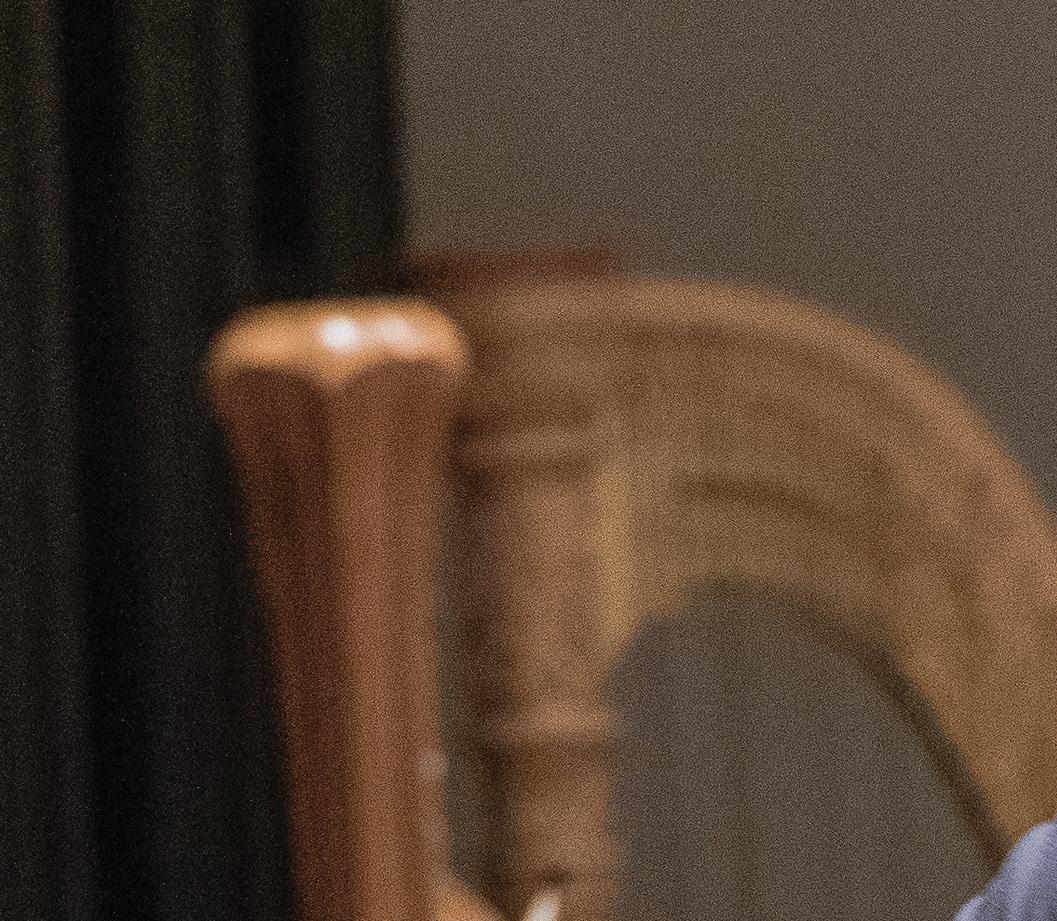

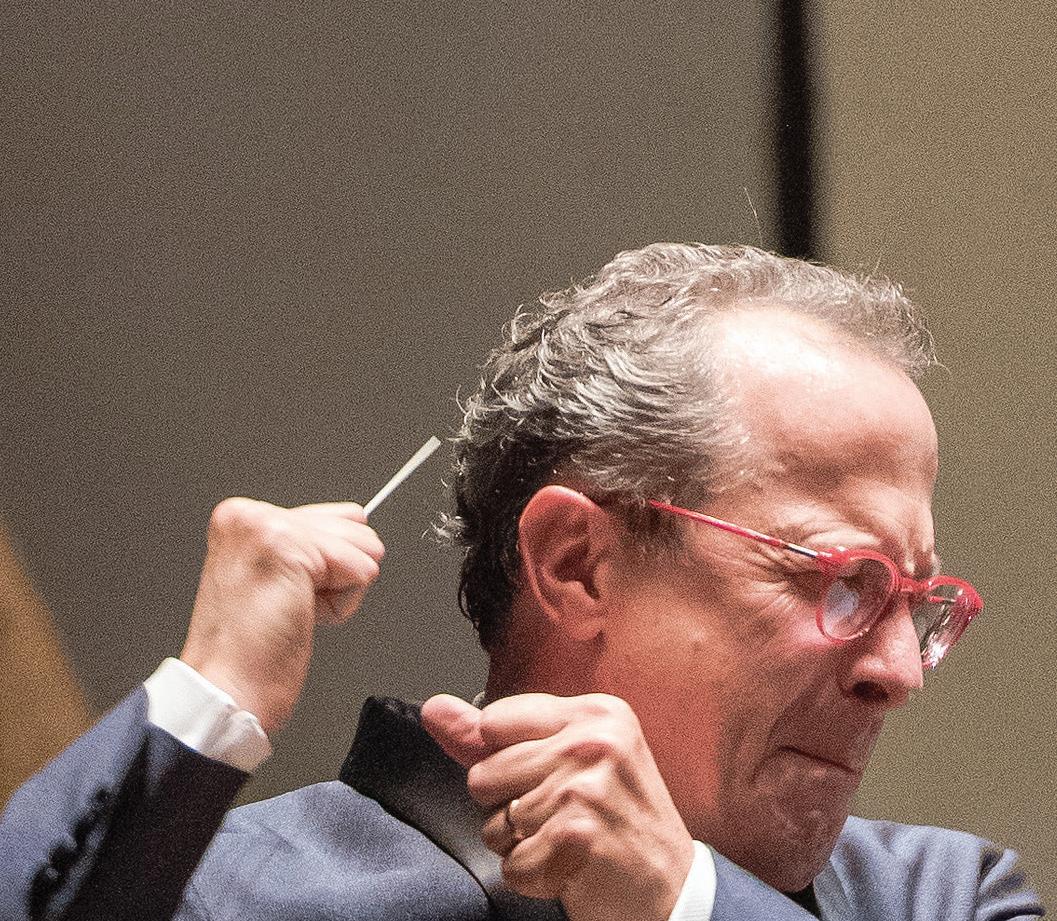
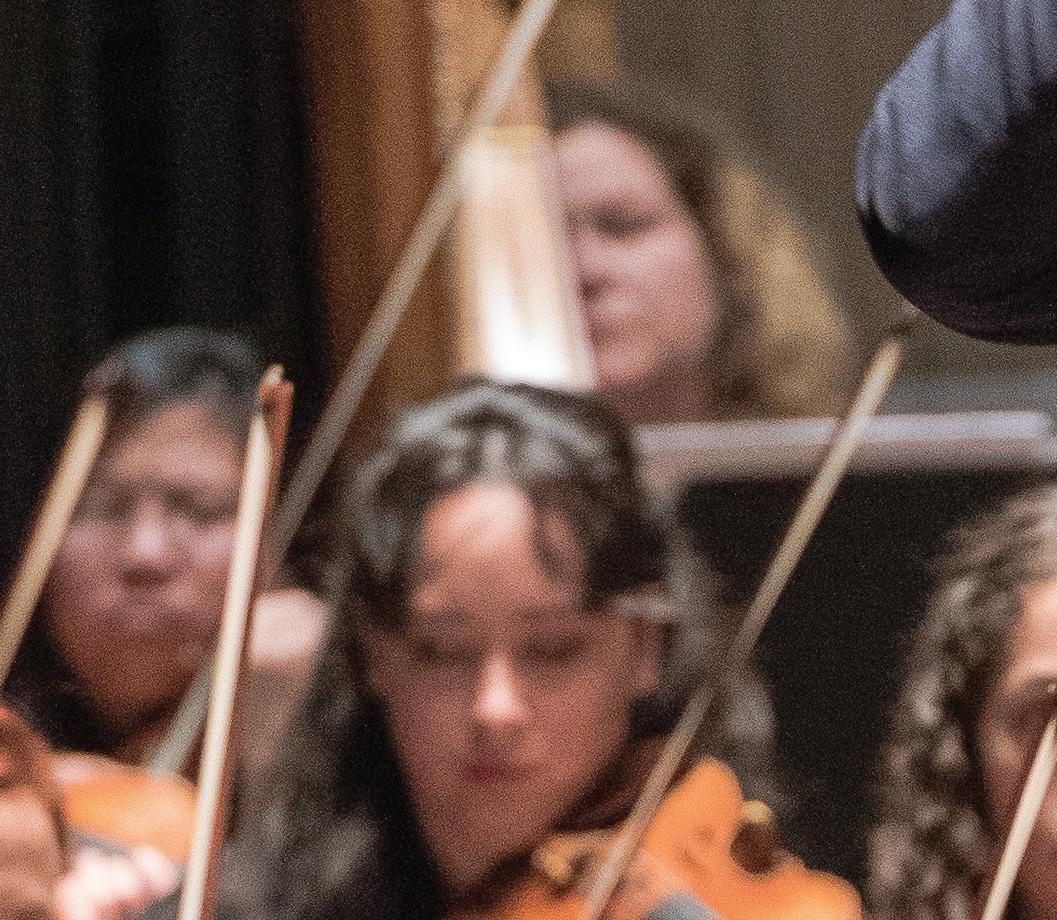
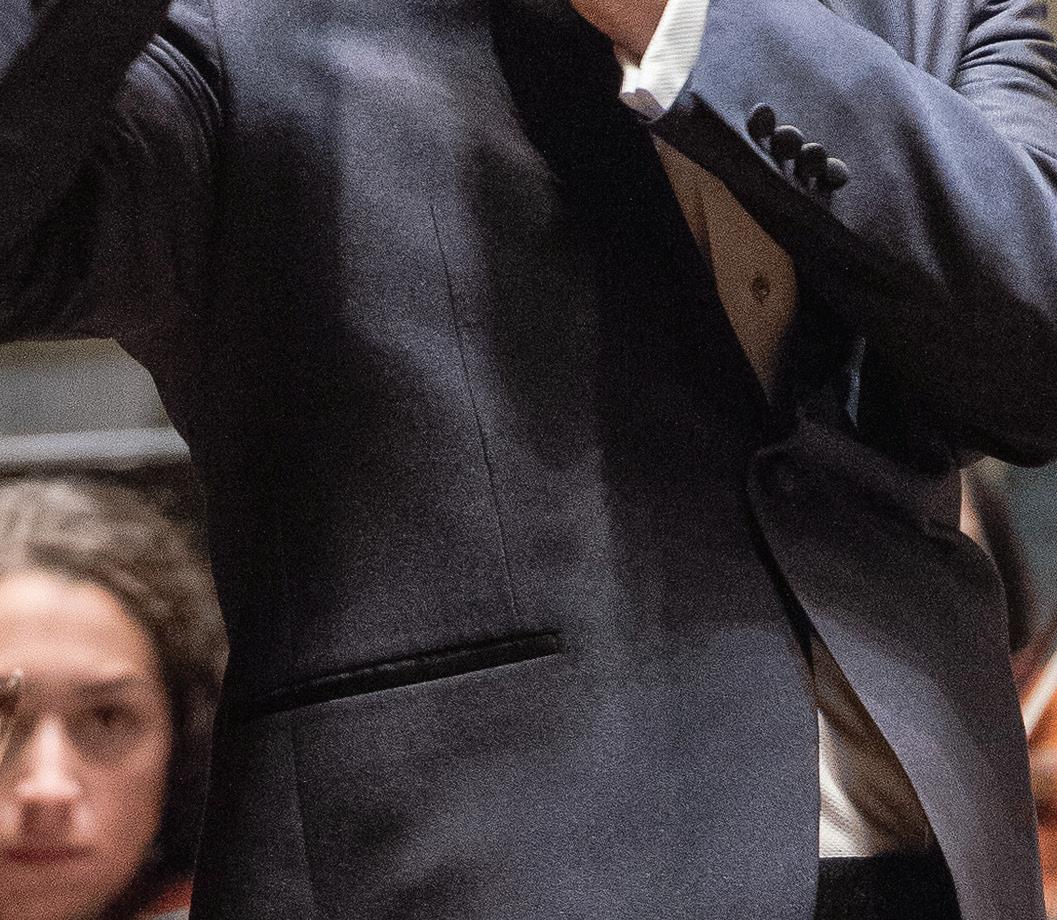

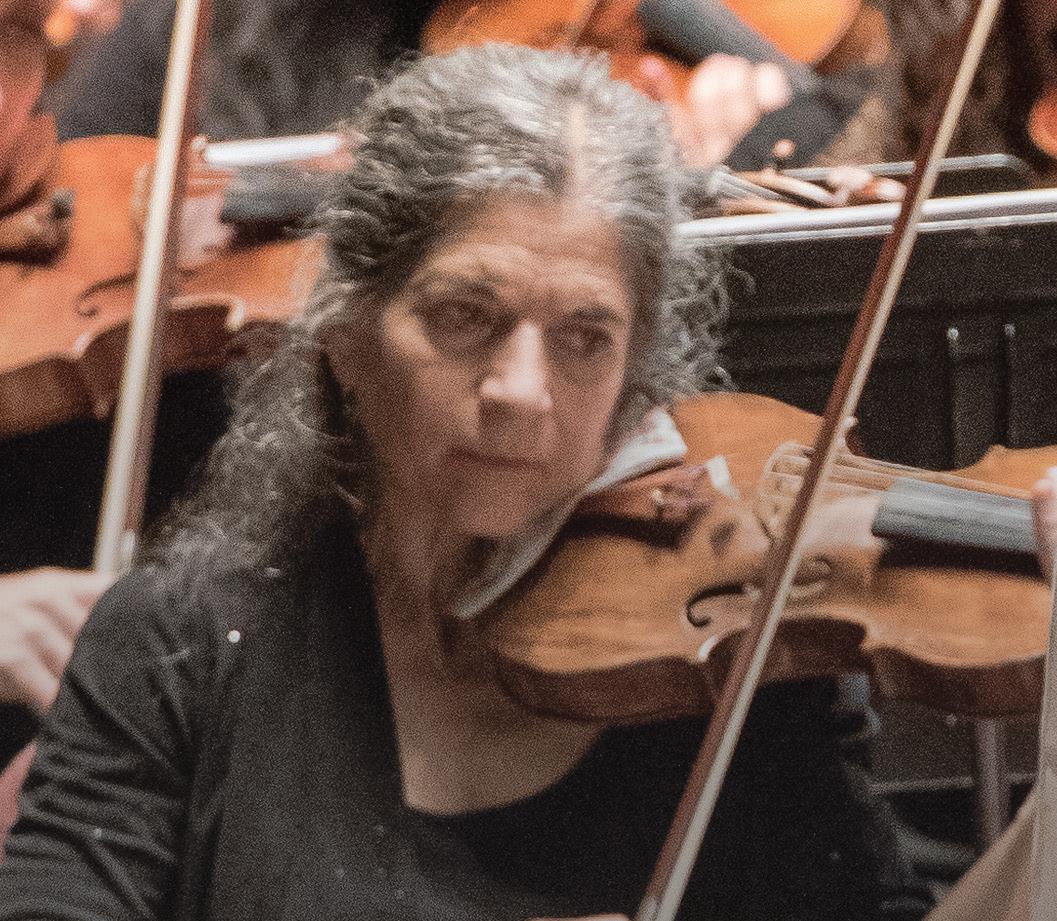
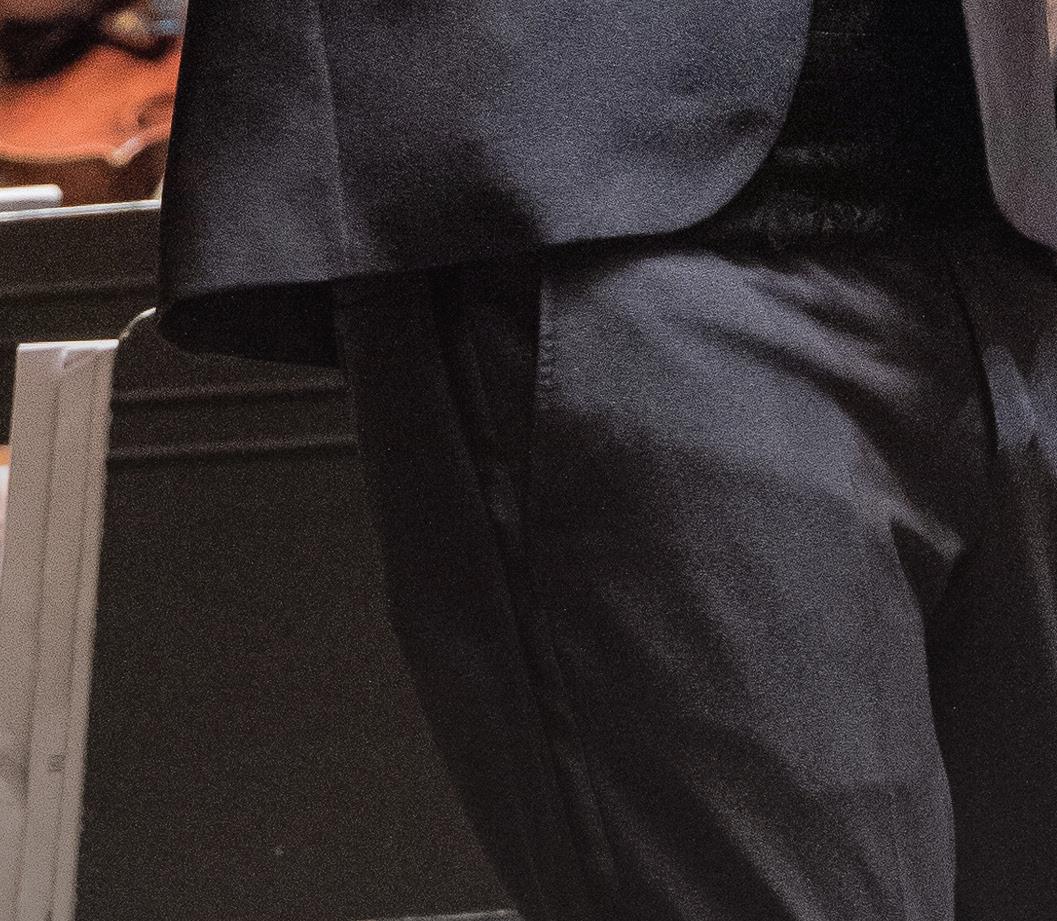
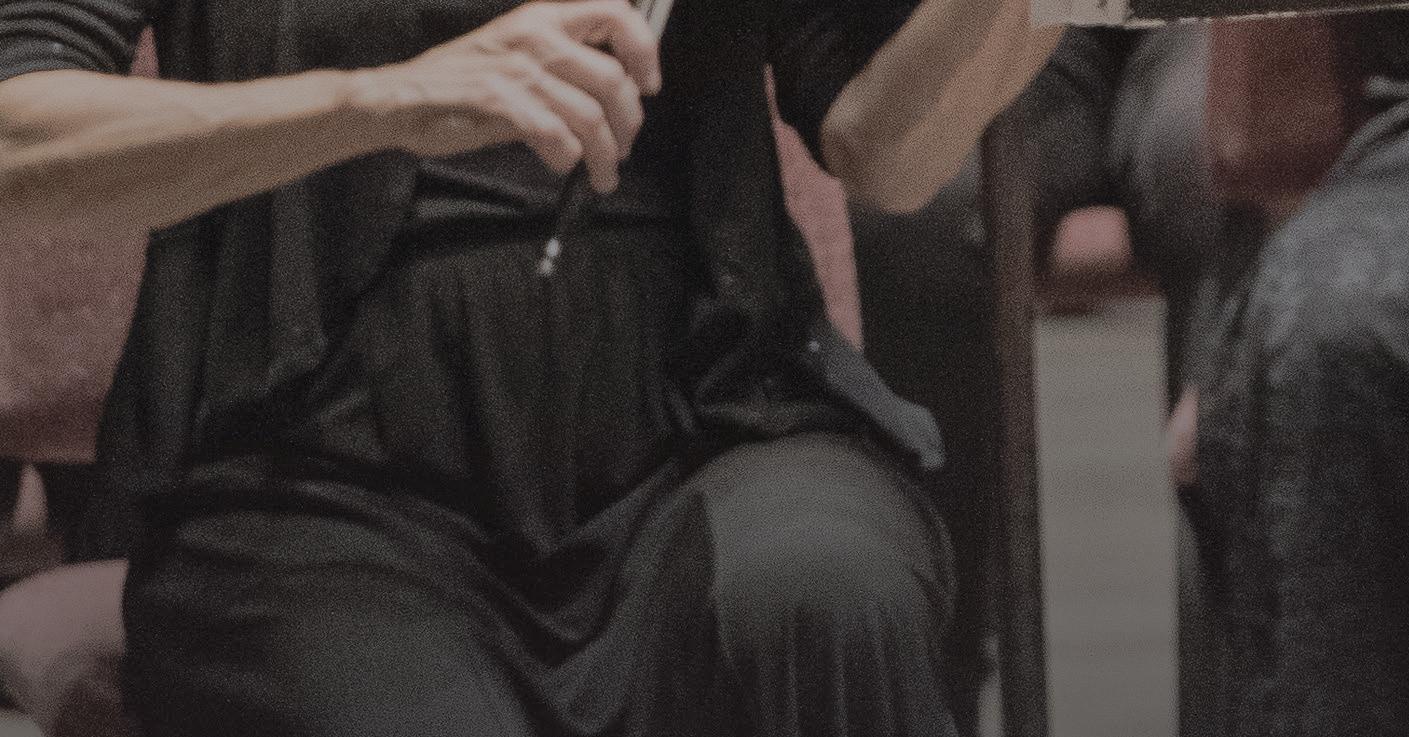
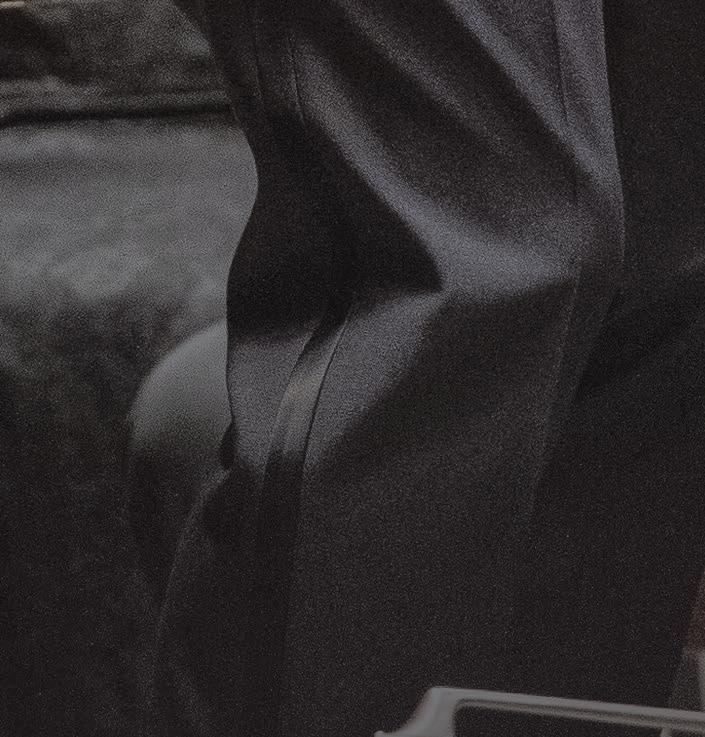

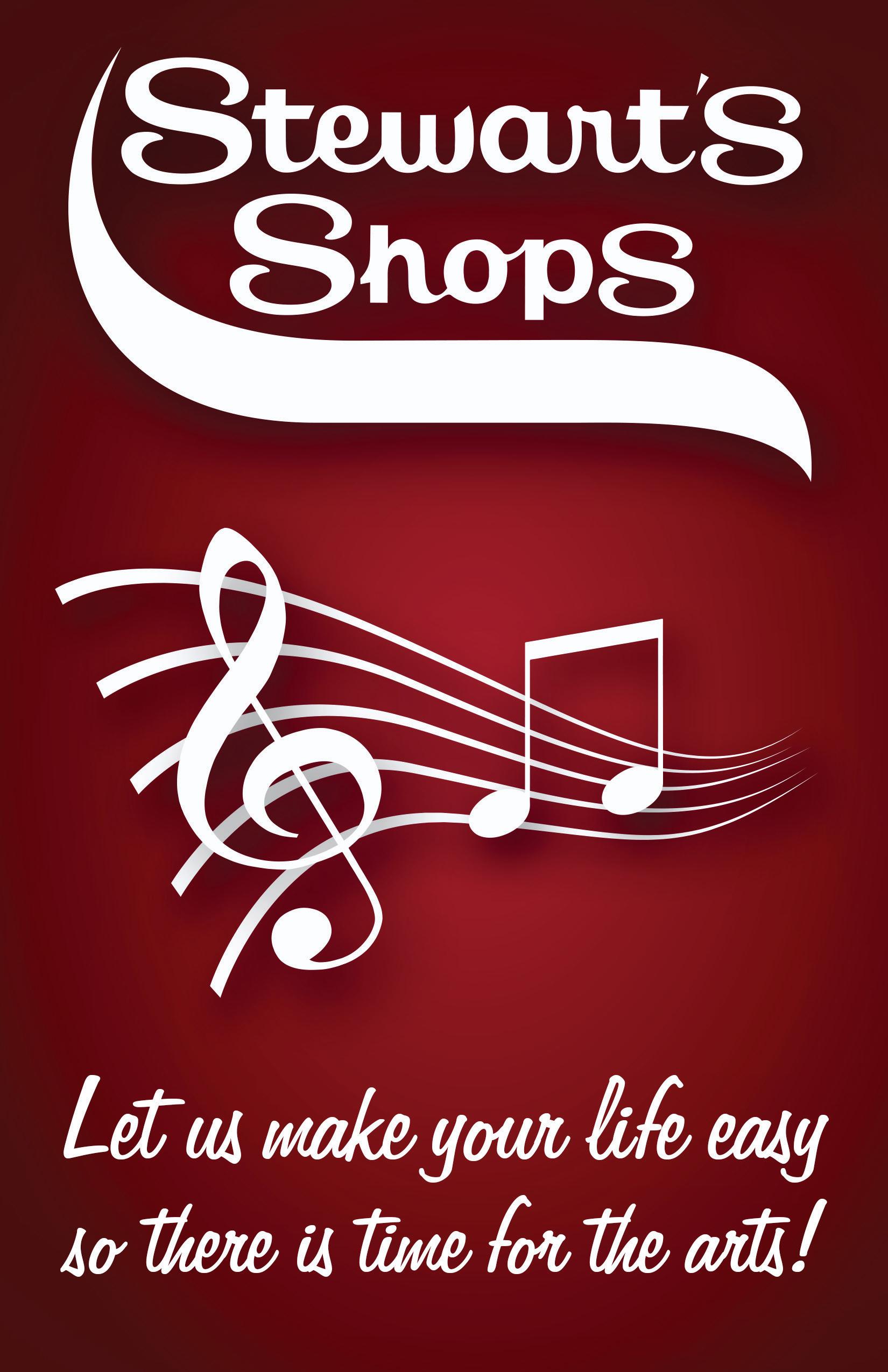

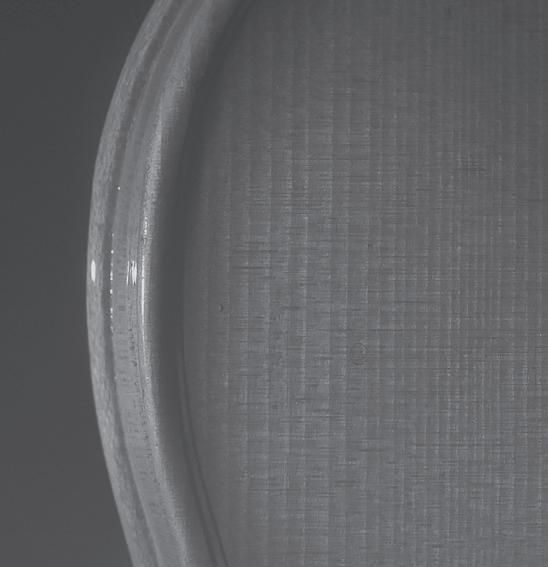








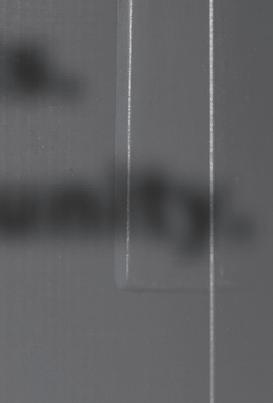










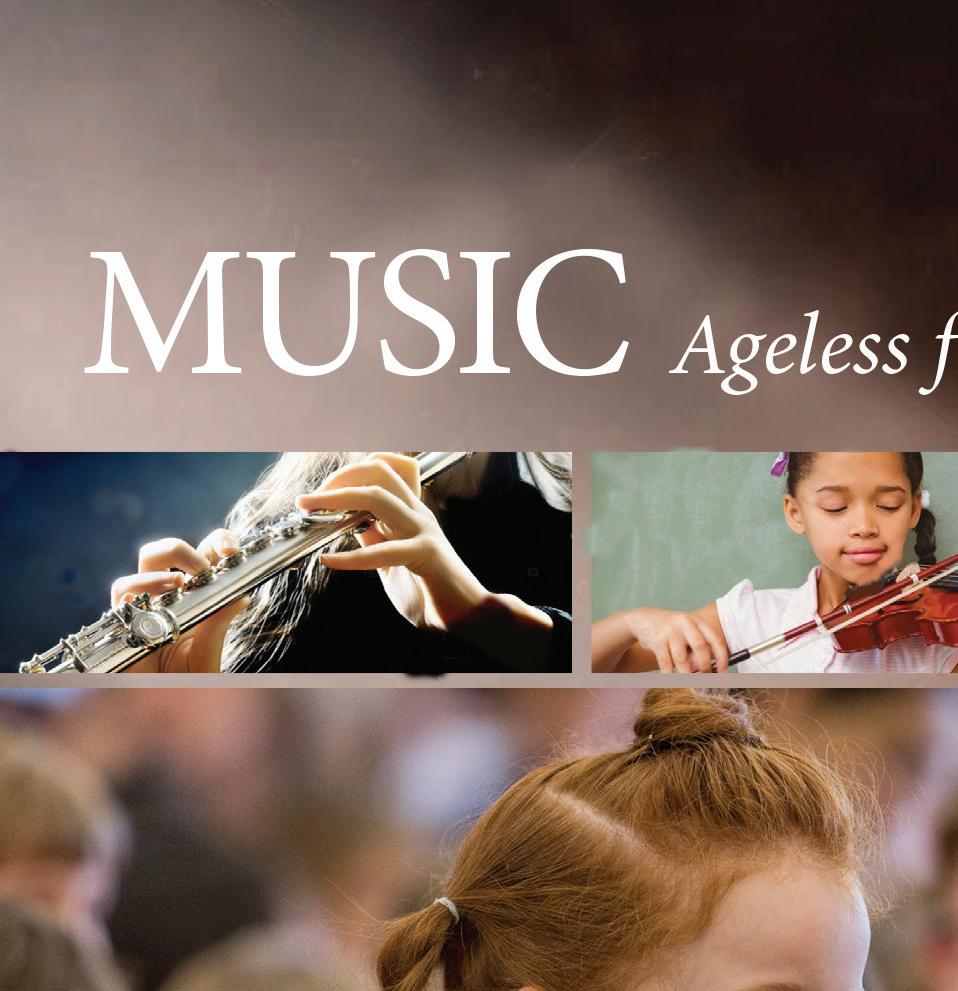
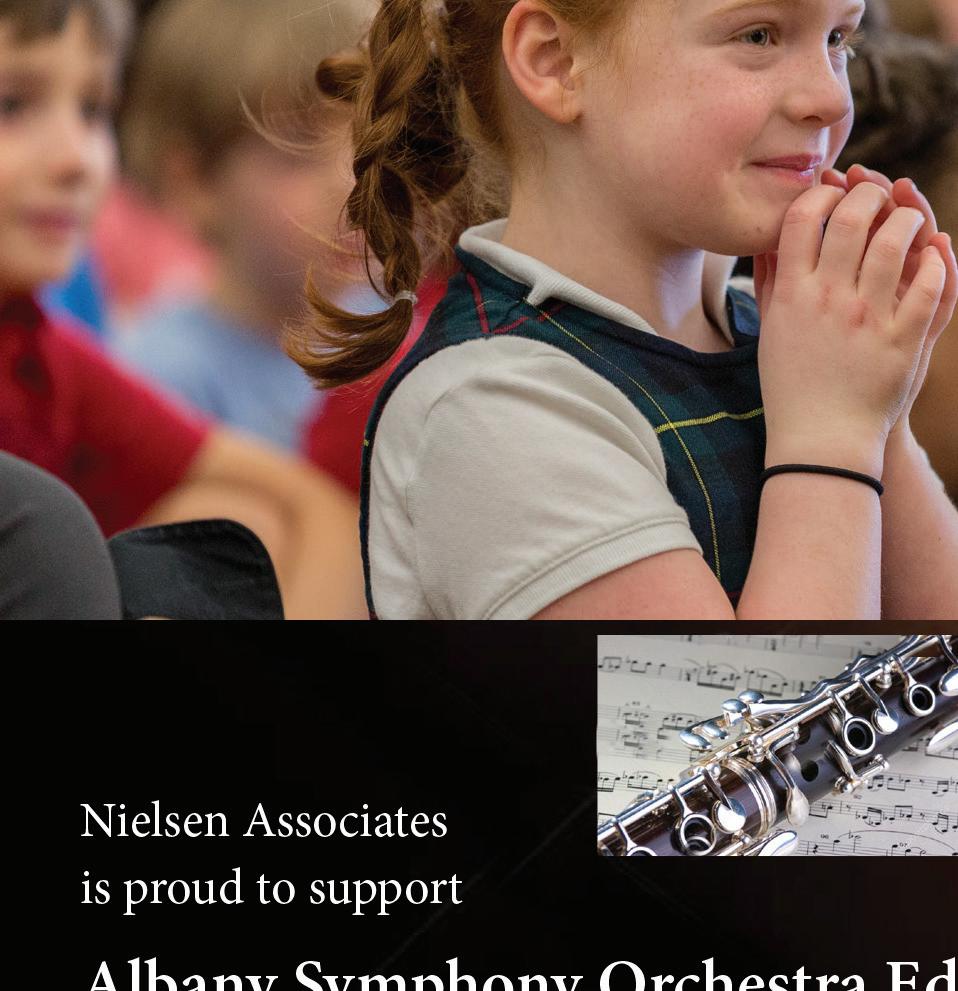
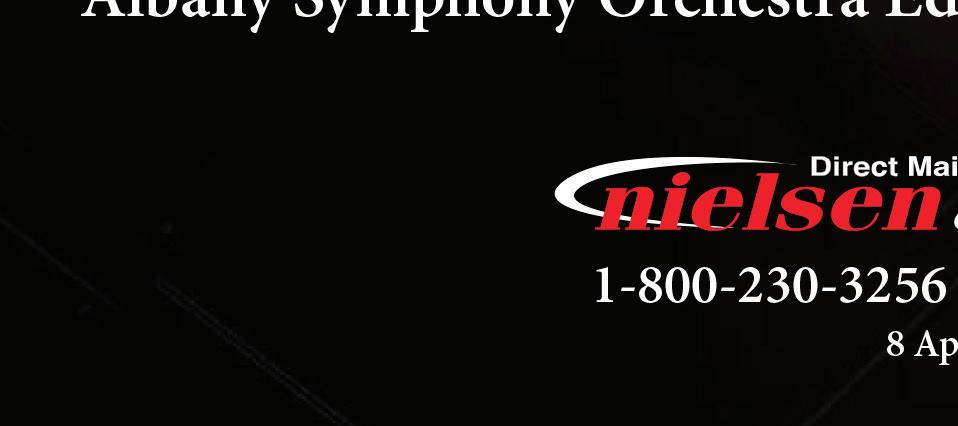

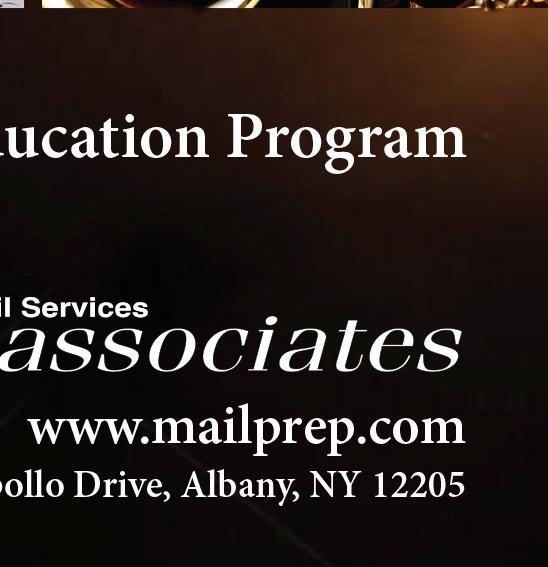
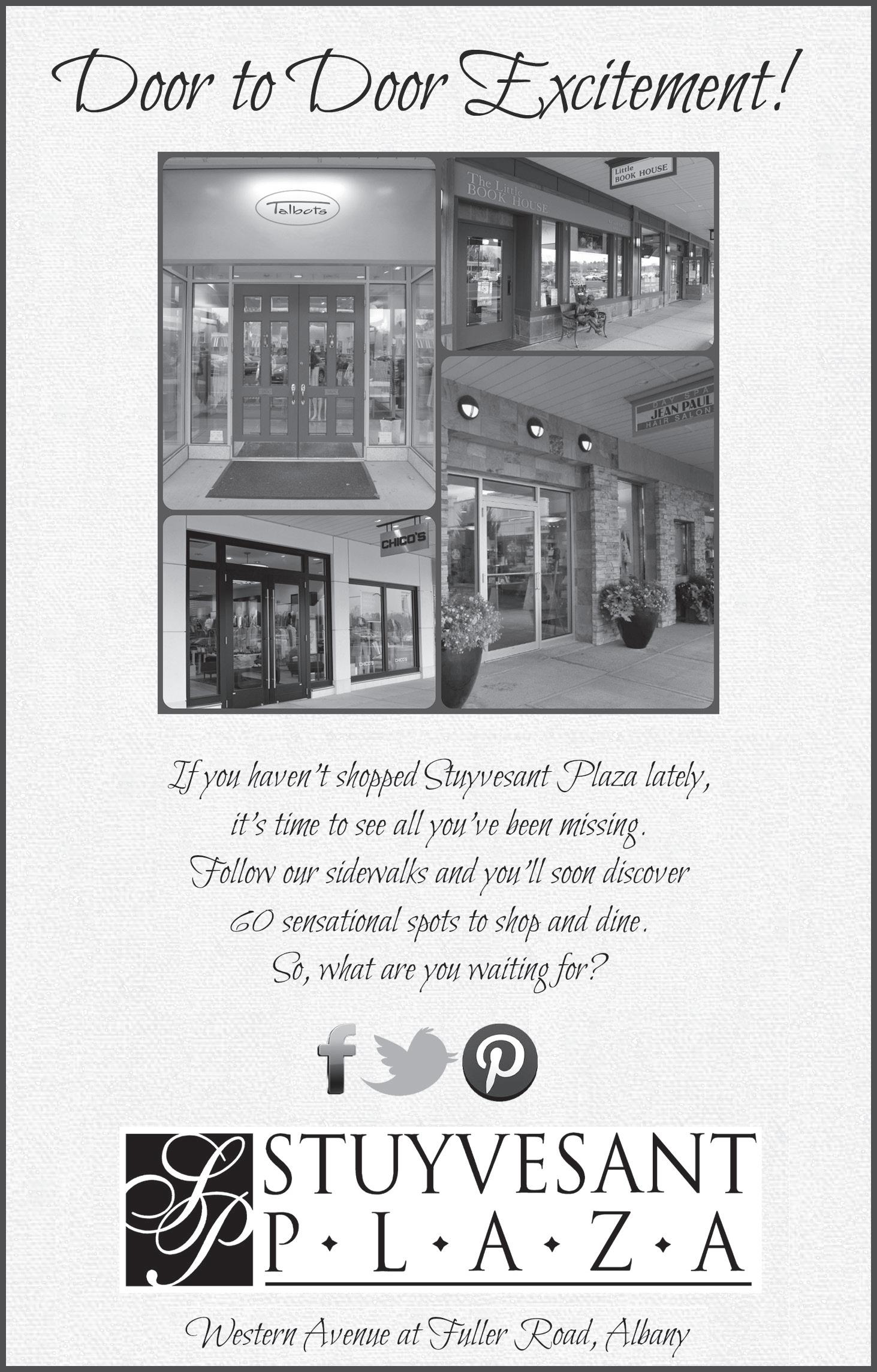
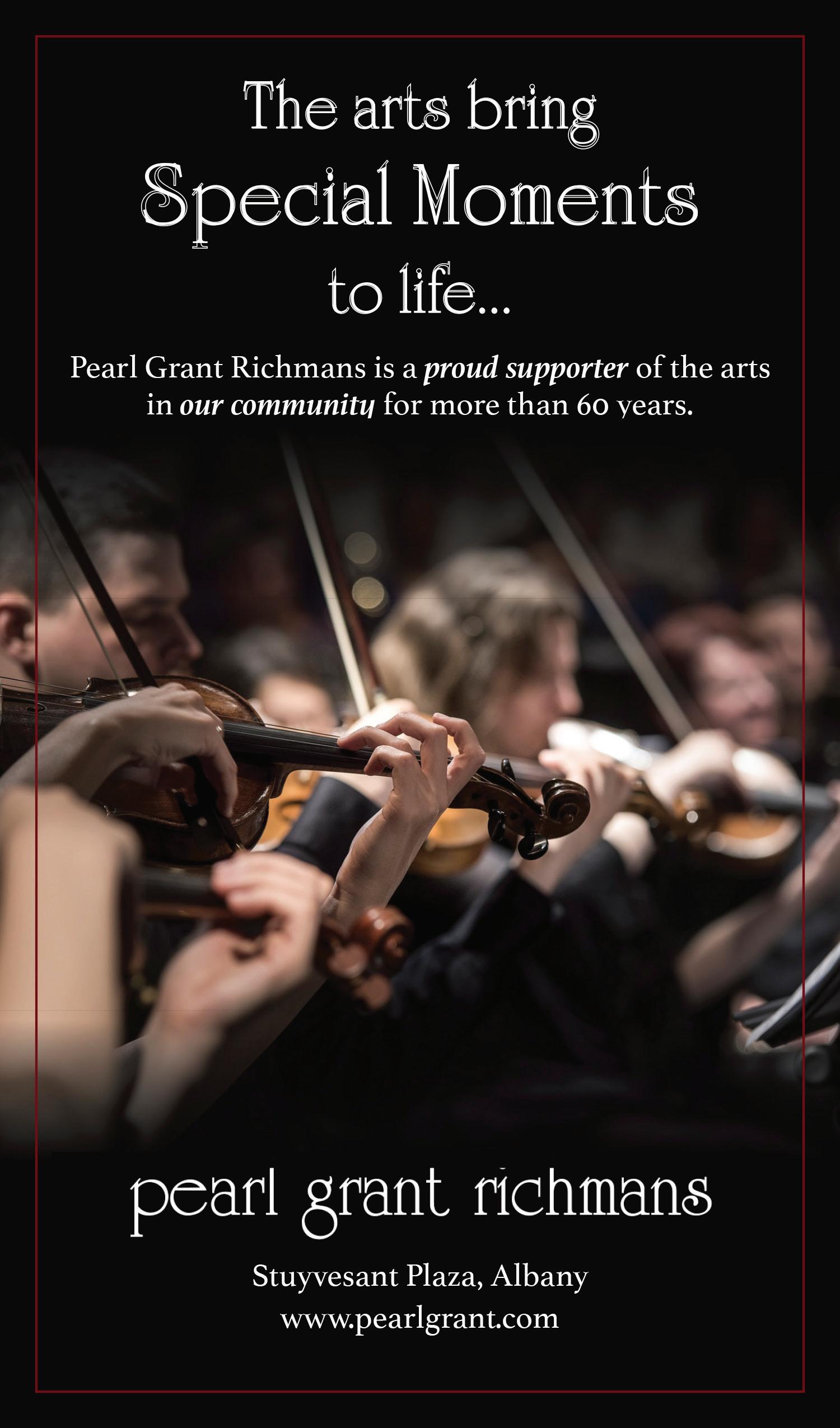
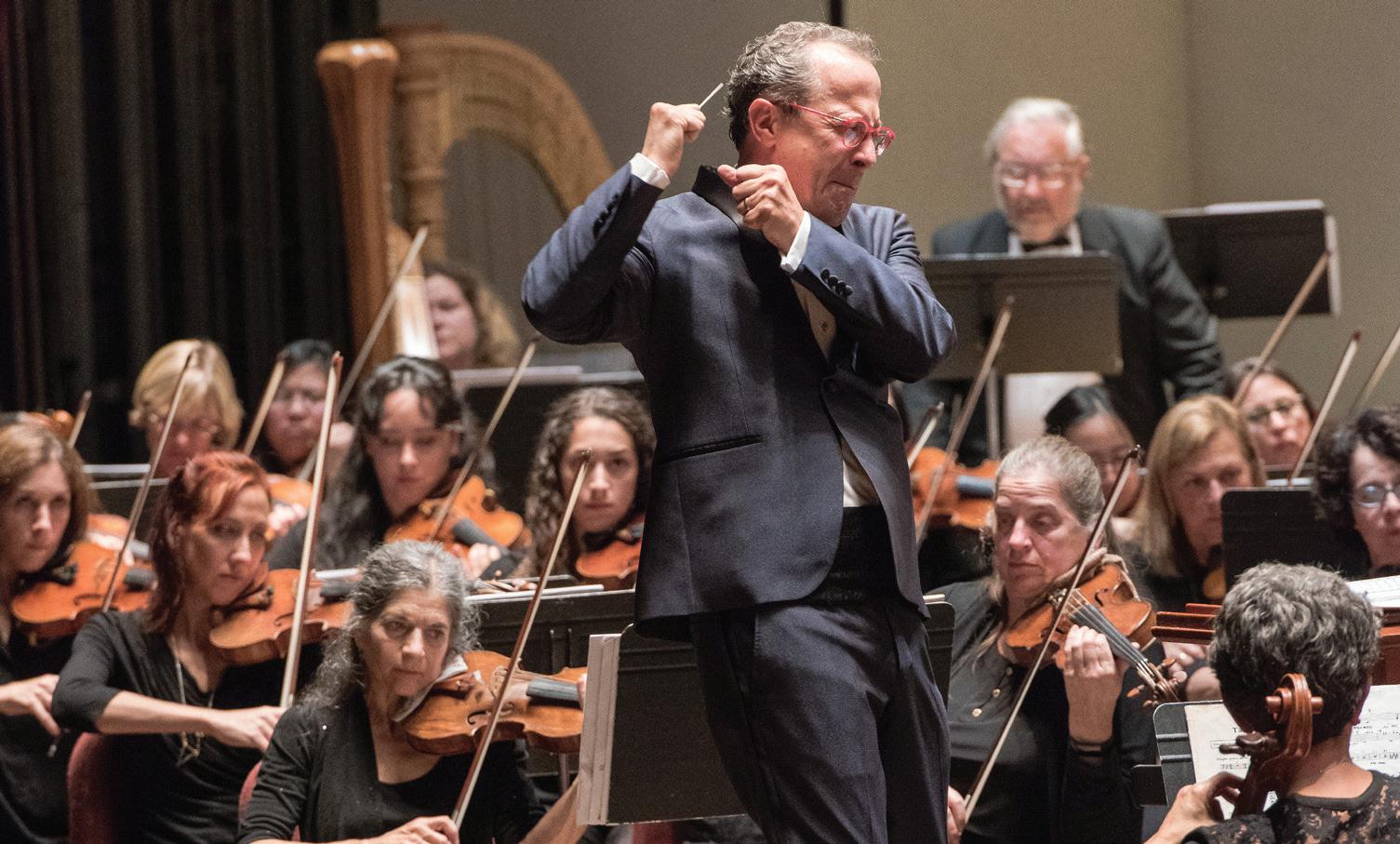
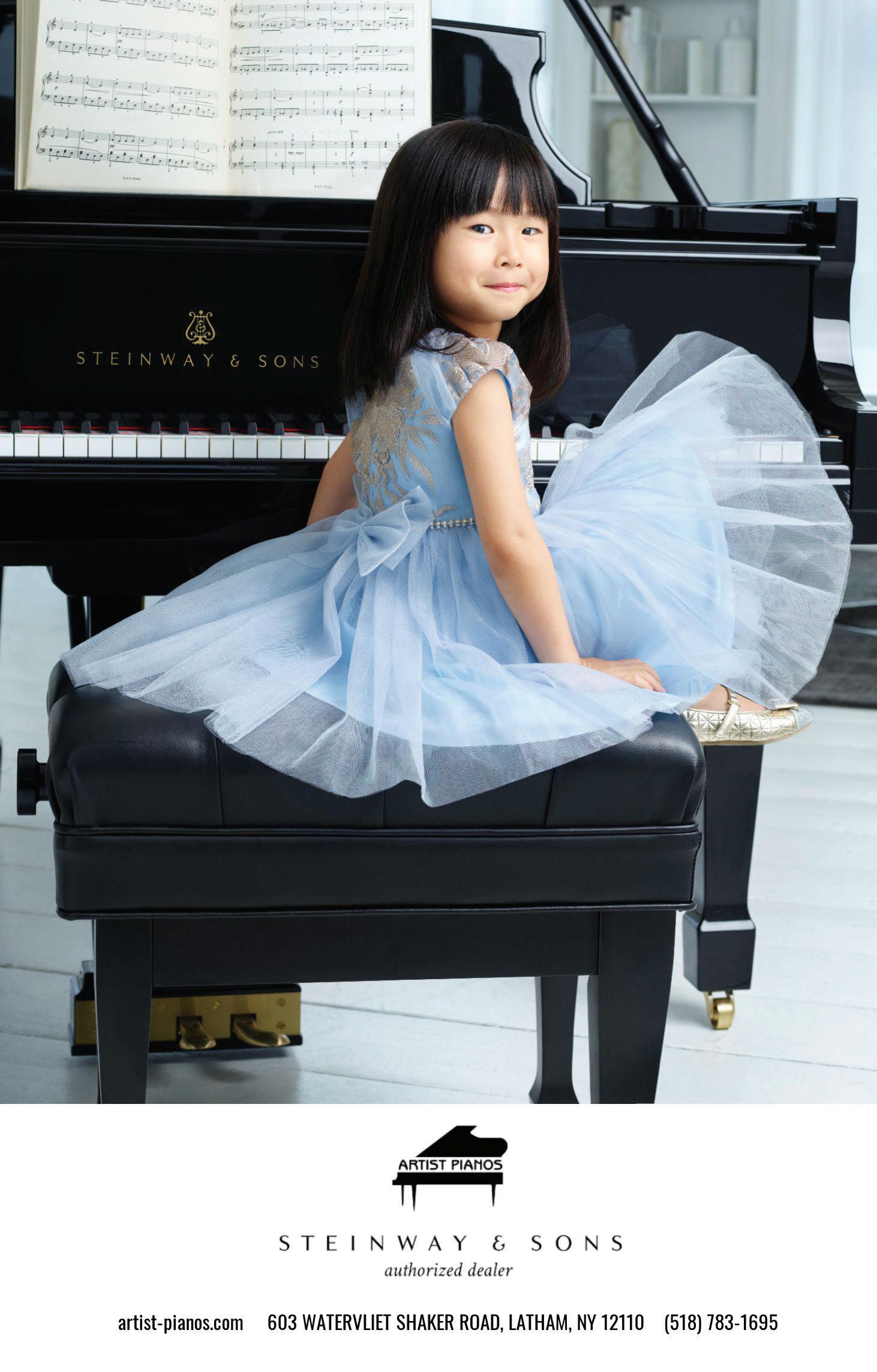











































On behalf of all of us at the Albany Symphony, welcome! We are so excited to be making music for you and sharing it with you. Whether you’re joining us in the concert hall or watching us from home, we are so glad you’re here.
This year, we celebrate David Alan Miller’s 30th season as our music director! We’re presenting several of his favorite classic masterworks, as well as a diverse and adventurous array of music from both leading and emerging voices of today. From Beethoven, Brahms and Strauss to Jessie Montgomery, Viet Cuong, and recent Pulitzer Prize winner Tania León, our upcoming programs feature the beauty, virtuosity, discovery and curiosity that make our concerts one-of-a-kind experiences. And, this December, we’ll gather once again for our favorite holiday


ANNA KUWABARA Executive Director
tradition, The Magic of Christmas, as well as for a program of special selections from Tchaikovsky’s timeless music from The Nutcracker. Don’t miss a minute of the merriment!
The beauty of orchestral music is rooted in the way it brings people together. It’s shaped by the way we gather in our concert halls, and in our communities. Over the last year and a half, we’ve overcome so much together and continued sharing music along the way. To everyone who streamed our concerts online last season; masked up, distanced and got vaccinated to help flatten the curve; and continued to support us even when so much was uncertain in the world—thank you. We are honored and grateful to continue making music for you.
In appreciation,
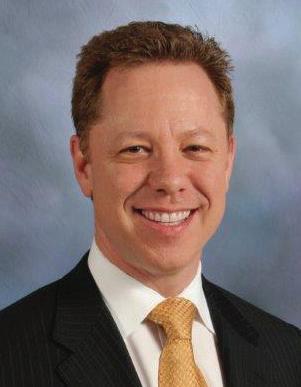

JERRY GOLUB Chair, Board of Directors

5555555555555
5555555555555


Two-time Grammy Award winning conductor David Alan Miller has established a reputation as one of the leading American conductors of his generation. As music director of the Albany Symphony since 1992, Mr. Miller has proven himself a creative and compelling orchestra builder. Through exploration of unusual repertoire, educational programming, community outreach, and recording initiatives, he has reaffirmed the Albany Symphony’s reputation as the nation’s leading champion of American symphonic music and one of its most innovative orchestras. He and the orchestra have twice appeared at "Spring For Music," an annual festival of America's most creative orchestras at New York City's
Carnegie Hall, and at the SHIFT Festival at the Kennedy Center in Washington, D.C. Other accolades include Columbia University’s 2003 Ditson Conductor’s Award, the oldest award honoring conductors for their commitment to American music, the 2001 ASCAP Morton Gould Award for Innovative Programming, and, in 1999, ASCAP’s first-ever Leonard Bernstein Award for Outstanding Educational Programming.
Frequently in demand as a guest conductor, Mr. Miller has worked with most of America’s major orchestras, including the orchestras of Baltimore, Chicago, Cleveland, Detroit, Houston, Indianapolis, Los Angeles, New York, Philadelphia, Pittsburgh, and San Francisco, as well as the New World Symphony, the Boston Pops, and the New York City Ballet. In addition, he has appeared frequently throughout Europe, the UK, Australia, and the Far East as guest conductor. Since 2019, Mr. Miller has served as Artistic Advisor to the Little Orchestra Society in New York City, and, from 2006 to 2012, served as Artistic Director of “New Paths in Music,” a festival of new music from around the world, also in New York City.
Mr. Miller received his most recent Grammy Award in 2021 for his recording of Christopher Theofanidis’ Viola Concerto, with Richard O’Neill and the Albany Symphony, and his first Grammy in 2014 for his Naxos recording of John Corigliano's "Conjurer," with the Albany Symphony and Dame Evelyn Glennie.
His extensive discography also includes recordings of the works of Todd Levin with the London Symphony Orchestra for Deutsche Grammophon, as well as music by Michael Daugherty, Kamran Ince, Michael Torke (London/Decca), Luis Tinoco, and Christopher Rouse (Naxos).
His recordings with the Albany Symphony include discs devoted to the music of John Harbison, Roy Harris, Morton Gould, Don Gillis, Aaron J. Kernis, Peter Mennin, and Vincent Persichetti on the Albany Records label. He has also conducted the National Orchestral
Institute Philharmonic in three acclaimed recordings on Naxos. A native of Los Angeles, David Alan Miller holds a bachelor’s degree from the University of California, Berkeley and a master’s degree in orchestral conducting from The Juilliard School. Prior to his appointment in Albany, Mr. Miller was associate conductor of the Los Angeles Philharmonic. From 1982 to 1988, he was music director of the New York Youth Symphony, earning considerable acclaim for his work with that ensemble. Mr. Miller lives in Slingerlands, New York, a rural suburb of Albany.
The Albany Symphony Orchestra celebrates our living musical heritage. Through brilliant live performances, innovative educational programming, and engaging cultural events, the Albany Symphony enriches a broad and diverse regional community. By creating, recording, and disseminating the music of our time, the Albany Symphony is establishing an enduring artistic legacy that is reshaping the nation’s musical future.

5555555555555 5555555555555
VIOLIN
Jill Levy
Heinrich Medicus Music Director
The Albany Symphony's string sections use revolving seating. Players behind the stationary chairs change seats systematically and are listed alphabetically.
CONCERTMASTER LIFETIME CHAIR, GOLDBERG
CHARITABLE TRUST
Eiko Kano + ASSISTANT CONCERTMASTER
Elizabeth Silver ^
Jamecyn Morey ^ Paula Oakes ^
Funda Cizmecioglu
PRINCIPAL
SECOND VIOLIN
Mitsuko Suzuki
ASSISTANT PRINCIPAL
SECOND VIOLIN
Barbara Lapidus ^ ENDOWED BY MARISA AND ALLAN EISEMANN
Gabriela Rengel ^
Brigitte Brodwin
Ouisa Fohrhaltz
Heather Frank-Olsen
Emily Frederick
Rowan Harvey
Margret E. Hickey
Christine Kim
Sooyeon Kim
Aleksandra Labinska
Kae Nakano
Yinbin Qian
Muneyoshi Takahashi
Harriet Dearden Welther
Noriko Futagami
PRINCIPAL ENDOWED IN PERPETUITY BY THE ESTATE OF ALLAN F. NICKERSON
Sharon Bielik + ASSISTANT PRINCIPAL
Carla Bellosa
Daniel Brye
Ting-Ying Chang-Chien
Anna Griffis
Dana Huyge
Hannah Levinson
CELLO
Susan Ruzow Debronsky
PRINCIPAL SPONSORED BY AL DE SALVO & SUSAN THOMPSON
Erica Pickhardt
ASSISTANT PRINCIPAL
Kevin Bellosa
Matthew Capobianco + Marie-Thérèse Dugré
Catherine Hackert
Hikaru Tamaki
BASS
Bradley Aikman
PRINCIPAL
Philip R. Helm
ASSISTANT PRINCIPAL
Michael Fittipaldi ^
Luke Baker
James Caiello
FLUTE
Ji Weon Ryu
PRINCIPAL
Mathew Ross
OBOE
Karen Hosmer PRINCIPAL
Grace Shryock
ENGLISH HORN VACANT
CLARINET
Weixiong Wang PRINCIPAL IN MEMORY OF F.S. DEBEER, JR. -ELSA DEBEER IN MEMORY OF JUSTINE R.B. PERRY -DAVID A. PERRY
Bixby Kennedy
BASSOON
William Hestand
PRINCIPAL ENDOWED IN PERPETUITY BY THE ESTATE OF RICHARD SALISBURY
HORN
William J. Hughes PRINCIPAL
Joseph Demko
Alan Parshley
Victor Sungarian
TRUMPET
Eric M. Berlin PRINCIPAL
Eric J. Latini
TROMBONE
Greg Spiridopoulos
PRINCIPAL
Karna Millen
BASS TROMBONE
Charles Morris
TUBA
Derek Fenstermacher PRINCIPAL
TIMPANI
Kuljit Rehncy + PRINCIPAL
PERCUSSION
Richard Albagli PRINCIPAL
Mark Foster
HARP
Lynette Wardle PRINCIPAL
PERSONNEL MANAGER
Susan Debronsky
LIBRARIAN
Elizabeth Silver
HOUSING COORDINATOR
Daniel Brye
UNION STEWARD
Greg Spiridopoulos
SYMBOL KEY ^ STATIONARY CHAIR + ON LEAVE



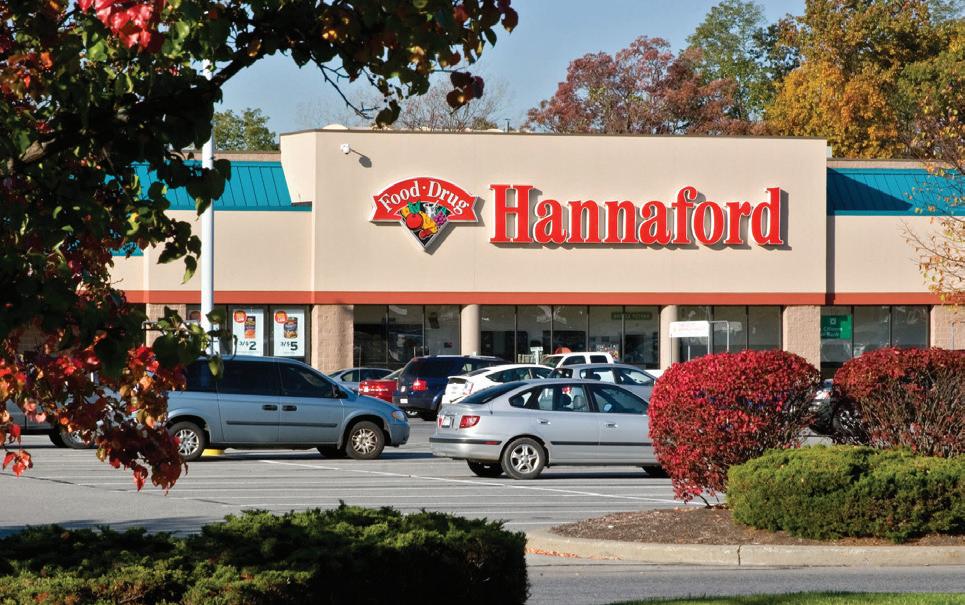



At M&T Bank, we understand how important art is to a vibrant community. That’s why we offer our time, energy and resources to support artists of all kinds, and encourage others to do the same. Learn more at mtb.com.

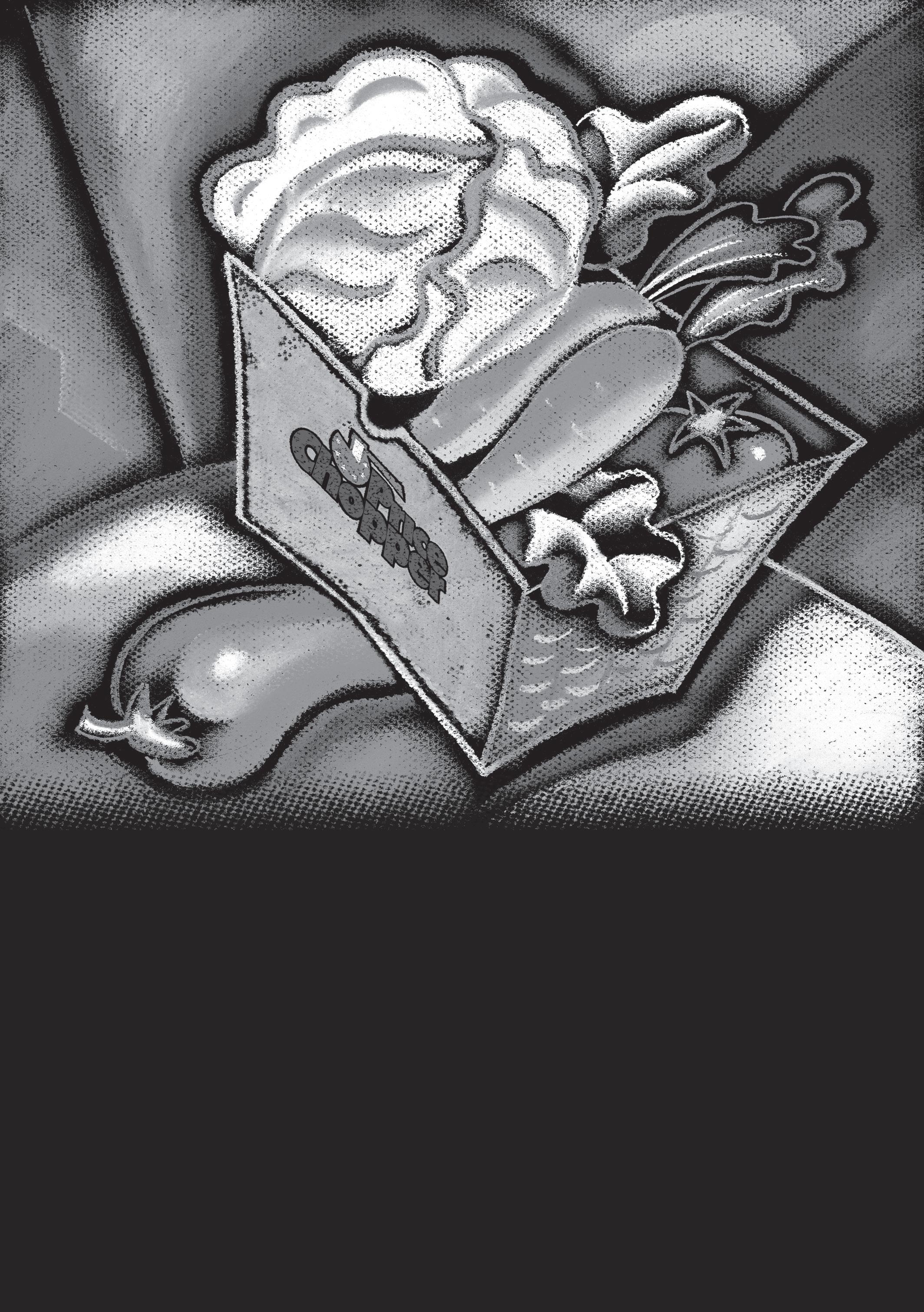






SATURDAY | OCTOBER 9, 2021 | 7:30 PM
Jessie Montgomery
Coincident Dances (B. 1981)
Jean Sibelius
Selections from Lemminkäinen Suite (1865-1957) "The Swan of Tuonela" "Lemminkäinen’s Return"
INTERMISSION (20 Minutes)
Ludwig van Beethoven
Symphony No. 3, 'Eroica' (1770-1827)
I. Allegro con brio
II. Marcia funebre: Adagio assai
III. Scherzo: Allegro vivace
IV. Finale: Allegro molto
CONCERT SPONSOR & POST-CONCERT TALK SPONSOR

All programs and artists are subject to change. During the performance, please silence mobile devices. Recording and photographing any part of the performance is strictly prohibited.
Jan Swafford begins his discussion of Beethoven’s Symphony No. 3 with the following thoughts, ones that many of us non-composers often have when we hear any piece of music: “How does a composer forge a great symphony, with its span of nearly an hour and its myriad notes? Among human endeavors, shaping a long work of music is one of the hardest things to do well. Very few people have ever been consistently good at it. No matter how long the piece takes to write, every note has to be marshaled to the same purpose, and in performance it should unfold as effortlessly as an improvisation. From the outside, the job seems superhuman. As Beethoven saw it from the inside, it was done one quilled note, one theme, one phrase, one transition, one section, one movement at a time.”
Another Albany Symphony season begins tonight, with opportunities to appreciate the inspired work of three composers who plucked out of the ether sounds they wanted to share with the world.
Jessie Montgomery is an acclaimed composer, violinist, and educator. She is the recipient of the Leonard Bernstein Award from the ASCAP Foundation, and her works are performed frequently around the world by leading musicians and ensembles. Her music interweaves classical music with elements of vernacular music, improvisation, language and social justice, placing her squarely as one of the most relevant interpreters of 21st-century




American sound and experience. Her profoundly felt works have been described as “turbulent, wildly colorful and exploding with life” (The Washington Post).
Montgomery was born and raised in Manhattan’s Lower East Side in the 1980s, during a time when the neighborhood was at a major turning point in its history. Artists gravitated to the hotbed of artistic experimentation and community development. Her parents—her father a musician, her mother a theater artist and storyteller—were engaged in the activities of the neighborhood and regularly brought Montgomery to rallies, performances, and parties where neighbors, activists and artists gathered to celebrate and support the movements of the time. It is from this unique experience that Montgomery has created a life that merges composition, performance, education and advocacy.
Since 1999, Montgomery has been affiliated with The Sphinx Organization, which supports young African American and Latinx string players. She currently serves as composer-in-residence for the Sphinx Virtuosi, the Organization’s flagship professional touring ensemble. She was a two-time laureate of the annual Sphinx Competition and was awarded a generous MPower grant to assist in the
development of her debut album, Strum: Music for Strings (Azica Records). She has received additional grants and awards from the ASCAP Foundation, Chamber Music America, American Composers Orchestra, the Joyce Foundation and the Sorel Organization.
To learn more about Jessie Montgomery, visit jessiemontgomery.com.
Coincident Dances is inspired by the sounds found in New York’s various cultures, capturing the frenetic energy and multicultural palette one hears even in a short walk through a New York City neighborhood. The work is a fusion of several different sound-worlds: English consort, samba, mbira dance music from Ghana, swing, and techno.
My reason for choosing these styles sometimes stemmed from an actual experience of accidentally hearing a pair simultaneously, which happens most days of the week walking down the streets of New York, or one time when I heard a parked car playing Latin jazz while I had rhythm and blues in my headphones. Some of the pairings are merely experiments. Working in this mode, the orchestra takes on the role of a DJ of a multicultural dance track. —J.M.
When Jean Sibelius (1865-1956) received an honorary degree from Yale in 1914, the citation said, “His works, his power and originality made him from the very beginning of his career one of the most prominent of contemporary composers. What Wagner




did for the sagas of ancient Germany, Sibelius has done in a magnificent way for Finnish myth and the national epics of Finland. He has translated Kalevala into the international language of music.”
Sibelius was born into the century that saw the collecting of native Finnish poems and folk tales by Elias Lonnrot (1802-1884). This collection became the Kalevala, and it was around many of these stories that Sibelius wrote his early music, before the appearance of his seven symphonies.
Though the suite of these scenes from the life of the flawed hero Lemminkäinen was premiered in 1895, the score underwent revisions until as late as 1939. As Maestro David Alan Miller notes, these are “individual pieces inspired by episodes in the story,” and, as such, they do not tell the entire, chronological story.
The first movement of the suite takes place on Saari, an island to which Lemminkäinen’s doting mother sent him after he disobeyed her. He is to stay here for three years and, one assumes, develop common sense. However, the island is
made up exclusively of young women, from whom he asks a home. He sings to them, of course, and charms them—until the men return. Off he must go! Listen for the French horns (heroic brass) at the beginning; the lively dance music; ominous minor key rumblings; sweeping love music in the strings; and the quiet ending, Sibelius' way of showing Lemminkäinen’s departure from the island.
The second selection, which is often played as a standalone concert piece, depicts one of Lemminkäinen’s earlier hero trials. In order to win the hand of a young woman, he is ordered to kill the Swan of Tuonela, who floats on the black river surrounding the isle of the dead. Lemminkäinen, however, is killed, and his corpse hacked to pieces. (Another example of his mother coming to the rescue: she reassembles his body parts.) This evocative music focuses on the placid, paddling, and protective swan, featuring the haunting English horn, with lovely cello commentary.
The last movement of the suite concerns Lemminkäinen’s return home after various struggles, but even that effort is temporarily thwarted by an enemy who freezes the river his boat is on. He and his friend disembark and ride home on horses over the ice. Note the triumphant mood evoked by the forward motion of the strings, blasts from the brass, rapid wind playing, and decisive chords: home, resolution.
One contemporary critic of Symphony




commented, “Beethoven’s music could soon reach the point where one would derive no pleasure from it unless well trained in the rules and difficulties of the art, but rather would leave the concert hall… crushed by a mass of unconnected and overloaded ideas and a continuing tumult by all the instruments.”
Though Beethoven supposedly altered the dedication of this symphony to his hero, Napoleon, after that general declared himself Emperor, the work is, nevertheless, called Eroica; and if a hero is one with uncommon stature, then this work stands out from anything that preceded it. Coming in at around 50 minutes, it dwarfs any symphonies by Haydn, Mozart, and, up to that time, the two by Beethoven himself. No wonder that critic was stunned.
The first movement, in ¾ time, starts off with two sharp blows, after which Beethoven outlines an E-flat major triad. This motive reappears throughout, transformed. A quieter second theme appears in the winds. The long exposition is repeated and the development section begins. Snatches of the dramatic hammer blows, the subtle evocation of the triad, the fragmentation of familiar motives, fugal gestures and stunning harmonic dissonance makes this part of the movement thrilling. The recapitulation is announced by the French horn, and the material we originally heard returns, mostly unadorned. The coda is, perforce, nearly as long as the exposition in order to be worthy of all that has gone before, and the movement concludes with three orchestral strikes, reminding us of the opening strokes.
The second movement is in E-flat’s relative minor, C-minor. It is a funeral march, popular in French marches and operas around that time. The movement begins with a little halting figure that forms the core of the movement. The step is deliberate, reinforced by drums; the orchestral coloring is mournful, with oboe and bassoon getting a chance to solo; the lower instruments are prominent; and the line walks up and down the scale, with some chromaticism. This is a long procession. The outbursts of grief are pronounced, but at the end there is, perhaps, resignation.
The third movement (in ABA form) starts with a small figure that runs up and down the scale, eventually between B-flat and E-flat. Listen for the occasional syncopation, the fugal gestures, the dynamic contrasts, the way this motive is passed around the sections of the orchestra, and
the steady strings that provide the pulse. The three horns announce the trio, which swings along without the insistent string work of the scherzo section. Then the scherzo returns, and all is recognizable except for one clever change in meter as the E-flat major chord is being outlined, and, then of course, the coda.
After a brief and swirling introduction, the last movement begins with a first theme in the plucked strings around the interval E-flat to B-flat. The winds subsequently pick up a second tune on E-flat to G, the opening notes of the first movement and a reference to the melody Beethoven created in the ballet, The Creatures of Prometheus in 1801. These two themes get, according to Edward Downes, 12 variations: in key, rhythm, and instrumentation. A rollicking journey ensues, concocted as only the master could. The oboe begins the coda just at the point of greatest tension. The tempo slows, and these measures are quite beautiful, with different colors and moods emerging one after another. But the piece must—and does—end with a wallop. The horns take center stage; the drum sounds; and that E-flat to G gets yet one more extended treatment. With his boundless creative genius, Beethoven has made something of the tiniest scrap of musical material. Extraordinary! The symphony was premiered on April 7, 1805, in Vienna.
Sibelius and Beethoven program notes by Paul Lamar. Montgomery program note by the composer.







SATURDAY | NOVEMBER 13, 2021 | 3:00 & 7:30 PM
Franz Joseph Haydn Symphony No. 96, "Miracle" (1732-1809)
Viet Cuong
Next Week’s Trees (1990) East Coast premiere
INTERMISSION (20 Minutes)
Johannes Brahms
Piano Concerto No. 1 (1833-1897)
I. Maestoso
II. Adagio
III. Rondo: Allegro non troppo
POST-CONCERT TALK SPONSOR

All programs and artists are subject to change. During the performance, please silence mobile devices. Recording and photographing any part of the performance is strictly prohibited.
Premieres! The first performance of Haydn’s Symphony No. 96 was a smashing success, though he had been around for quite awhile and had achieved a great reputation in his 59 years. The 26-year-old Brahms when he premiered Piano Concerto No. 1? Not so much. According to musicologists Robert Bagar and Louis Biancolli, he wrote to Joseph Joachim after the premiere: “At the conclusion three pairs of hands were brought together very slowly, whereupon a perfectly audible hissing from all sides forbade any such demonstration.”
Tonight, we are privileged to hear the East Coast premiere of Viet Cuong’s Next Week’s Trees, a piece commissioned earlier this year by the California Symphony, where Cuong is the Young American Composer-in-residence.
When Prince Esterhazy died in 1790, his court composer of 28 years, Franz Joseph Haydn, was suddenly free to make his musical life elsewhere.
German-born Johann Peter Salomon (1745-1815) was the impresario in London who invited Haydn to that city in 1791 to premiere six symphonies, of which tonight’s was one. Over the course of two years, he did so, then returned to Austria. But so successful was that initial engagement that Haydn went back to London in 1794 to conduct six more, culminating with the splendid No. 104, the “London.” In fact, all 12 of the Salomon symphonies,




as they became known, are splendid. Haydn was at the top of his game—he was the master of the classical symphony—and the public couldn’t get enough of him as composer and conductor. Haydn returned to the employ of the Esterhazy family in Vienna in 1795, where he continued to live and compose until his death in 1809 at age 77.
In their book on Haydn, James Webster and Georg Feder make this observation: “In many ways Haydn’s style can be interpreted in terms of the duality in his personality between earnestness and humour… Of course, in his music these qualities are not unmediated binary opposites but poles of a continuum.”
Not uncharacteristically, the first movement begins with an adagio prelude to the typical allegro, an adagio revealing of this “earnestness and humour.” Haydn outlines a D-major chord, forte, but the last note of it is really the beginning of the next phrase, piano. The meter is ¾, but do we deeply
feel it? Not really. Listen to the harmonic wanderings, including a prominent D-minor chord. Is this going to be serious business? Of course not! It’s Haydn, who, in the allegro, gives us a recognizable ¾ and settles in with a little chugging figure in the bassoon and a figure of repeated notes in the violins. Both of these motives will be your aural touchstones as the movement goes on, but they will be deceptively so: instead of the traditional exposition of two themes, development, recapitulation, and coda, the whole movement seems to be development, with fragments of the tunes appearing and harmonic instability. Haydn can’t seem to stop being inventive, and when the movement ends, our expectations have been thwarted. Bravo, Haydn!
The andante is equally full of surprises. While the running figure and repeated notes echo the first movement, the charming dialogue between strings and winds is fresh. G-major is the key—until it’s G-minor, in a rich middle section. A solo violin appears near the end, and the graceful ending suggests that our walk (andante) has been, for the most part, a pleasant stroll.
The third movement offers a menuet (with its characteristic repeat) that is a bit heavy-footed: We feel the solid downbeat. The trio section features a solo oboe, and the texture as a whole is lighter than that of the menuet. The menuet returns, this time without repeats.
The last movement is the briefest, but much is packed into these three-and-ahalf minutes: strong rhythmic accents, chromaticism, a shift from major to minor and back again, virtuosic flute playing, a sprightly staccato tune. And it’s
in rondo form, which means that the little melody heard at the beginning is used to stitch together sections of new music. Overall, the movement packs a wallop!
Incidentally, the title Miracle should actually be applied to Symphony No. 102. It was at a performance of that work that a chandelier fell into the concert hall but did not injure anyone, because Haydn’s English fans had gathered around the stage for a better view of the famous gentleman from Austria.




Called “alluring” and “wildly inventive” by The New York Times, the music of American composer Viet Cuong has been performed on six continents by musicians and ensembles such as the Albany Symphony, the New York Philharmonic, Eighth Blackbird, Saint Paul Chamber Orchestra, Sō Percussion, Alarm Will Sound, the Atlanta Symphony, Sandbox Percussion, PRISM Quartet and Dallas Winds, among many others. Cuong’s music has been featured in venues such as Carnegie Hall, Lincoln Center and
the Kennedy Center, and his works for wind ensemble have amassed hundreds of performances worldwide. Passionate about bringing these different facets of the contemporary music community together, his upcoming projects include a concerto for Eighth Blackbird with the United States Navy Band. Cuong also enjoys exploring the unexpected and whimsical, and he is often drawn to projects where he can make peculiar combinations and sounds feel enchanting or oddly satisfying. His recent works thus include a snare drum solo, percussion quartet concerto, and, most recently, a double oboe concerto. He is currently the California Symphony’s Young American Composer-in-Residence, and recently served as the Early Career Musician-in-Residence at the Dumbarton Oaks. Cuong holds degrees from the Curtis Institute of Music (AD), Princeton University (MFA), and Peabody Conservatory (BM/MM).
To learn more about Viet Cuong, visit vietcuongmusic.com.
The title of this piece comes from Mary Oliver’s poem “Walking To Oak-Head Pond, And Thinking Of The Ponds I Will Visit In The Next Days And Weeks.” In this particular time of great loss, I was deeply inspired by Oliver’s words—words that are a gentle reminder of the uncertainty of the future, the confident hope of the present, and the propulsive force of life that drives us through any doubt that a new day will arrive.
Next Week’s Trees was commissioned by the California Symphony as part of their Young American Composer-in-Residence program. Heartfelt thanks to everyone at the California Symphony. —V.C.


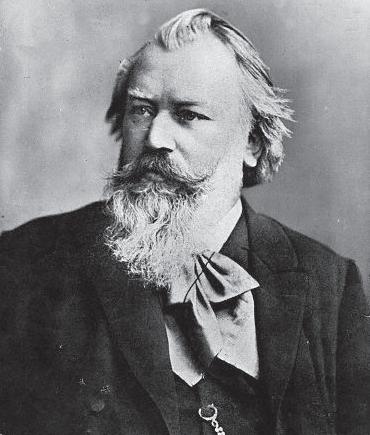


PIANO CONCERTO NO. 1
Piano music bookends and anchors the career of Johannes Brahms (1833-1897). Opus 1 is a piano sonata in C-major; opus 119 is a set of four piano pieces. In between he wrote songs and chamber music featuring brilliant piano accompaniment.
This concerto was born out of frustration, but it wasn’t because Brahms was having difficulty writing one. He was struggling with writing a symphony—his first— and when he couldn’t pull it together, he used the material for a two-piano sonata. However, that form still seemed unsatisfactory, so he converted the first two movements of the sonata into the first two movements of this concerto, and the third movement of the sonata became the “Behold, all flesh” section of The German Requiem. And then the initial frustration was exacerbated by a lukewarm reception of the concerto in January of 1859. Over the next few years Brahms revised it.
This long and powerful piece grabs the reader by the throat in the orchestral exposition of the first movement, with a punctuated outlining of an inversion of a B-flat-major chord. This insistent jagged theme dominates the 20-minute-long allegro.
When the piano enters, however, the mood is quiet, and it’s in this more restrained state that the soloist introduces the hymn-like second theme, in F-major, the relative major of D-minor. The orchestra takes it up, and, for a little while, the drama is suspended. (Listen here for beautiful French horn work. Brahms’ father played the horn, and the son always wrote brilliantly for the instrument.)
But then, with a series of clamorous chords, the piano announces a return to the passion of the beginning. The first half of the theme is outlined; the piano continues to work overtime, trying, with tremolos in the right hand, to be symphonic. The two themes return, but if you think the extended treatment by the piano alone constitutes a cadenza, you’d be mistaken. The movement doesn’t have one.
Just as the stormy first movement may reflect Brahms’ feelings about his musical champion, Robert Schumann, who died in an asylum at age 46 in 1856, the second movement probably suggests Brahms’ emotional attachment to Schumann’s wife, Clara: The tender adagio, in 6/4, is expressive of his deep affection born of love and professional respect. Its meditative quality is evident immediately in a lengthy orchestral tutti in which a delicate melody is spun out, almost endlessly; in the dialogue be-
tween soloist and orchestra in the first six minutes; in the composer’s graceful three-against-two rhythm; tossed-off turns; and an extraordinary, if brief, sunny shift to major from minor. Though there’s a loud and passionate section for all forces about two-thirds of the way in (bespeaking Brahms’ frustrations?), the movement is highly introspective.
The third movement is the shortest of a concerto that clocks in at about 45 minutes. It’s in rondo form, meaning the pounding tune of the opening piano solo stitches together a number of episodes of “new” music. There’s even a little fugue in the strings at about six minutes in (Brahms, the consummate craftsman). Finally, the pianist gets a full-fledged cadenza here, before the gorgeous horns bring back the orchestra for a powerful conclusion, replete with mighty trills, flashy scale work, and knuckle-busting.
Haydn and Brahms program notes by Paul Lamar. Cuong program note by the composer.
Pianist Shai Wosner has attracted international recognition for his exceptional artistry, musical integrity and creative insight. His performances of a broad range of repertoire—from Beethoven and Schubert to Ligeti and the music of today—reflect a degree of virtuosity and intellectual curiosity that has made him a favorite among audiences and critics, who note his “keen musical mind and deep musical soul” (NPR’s All Things Considered).
Wosner is serving Resident Artist of Peoples’ Symphony Concerts from 2020 to 2023. Following an inaugural year of online-only performances, including a


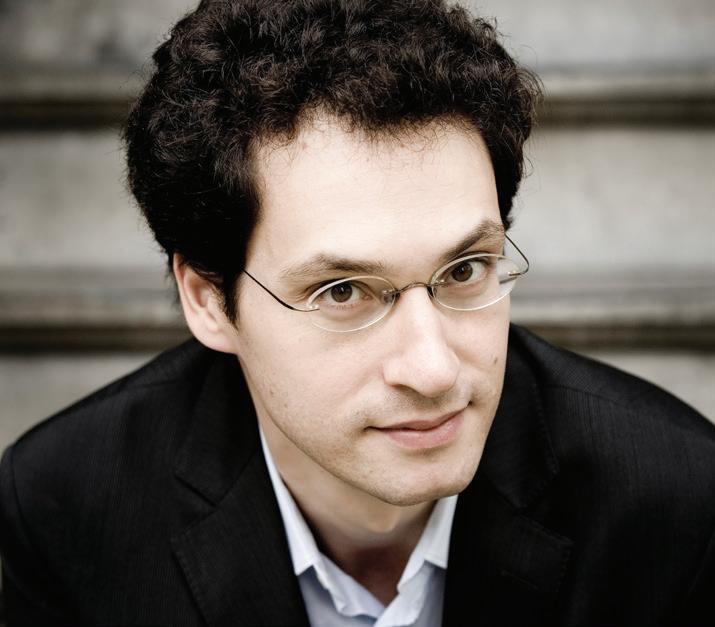
two-concert Schubertiade and a chamber program with the JACK Quartet, his residency continues this season with in-person performances of the premiere of a new commission, Variations on a Theme of FDR. The work is a suite of five variations by five different composers—Derek Bermel, Anthony Cheung, John Harbison, Vijay Iyer, and Wang Lu—inspired by the story of a particular immigrant chosen by each composer, and paired with Beethoven’s Diabelli Variations. This season, Wosner also curates and launches a new annual festival at Bard College Conservatory of Music, where he was recently named to the piano faculty. This season’s festival, titled Signs, Games & Messages, after the collection of pieces by György Kurtág, comprises three concerts devoted to the Hungarian composer’s music, as well as that of composers he was influenced by and whom he influenced.
Additional highlights of Wosner’s 2021–22 season include a program with the East Coast Chamber Orchestra (ECCO) presented by the Philadelphia Chamber Mu-
sic Society, in which he performs three Bach concertos and the Philadelphia premiere of Brett Dean’s Approach: Prelude to a Canon; Brahms’ Piano Concerto No. 1 with the Albany Symphony; and performances around the U.S. as part of the Zukerman Trio, with violinist Pinchas Zukerman and cellist Amanda Forsyth.
Wosner records for Onyx Classics, and his most recent album, a selection of Schubert piano sonatas released in March 2020, continues his career-long, critically acclaimed engagement with the composer’s music. His recordings also include Impromptu, comprising improvisationally inspired works by composers from Beethoven and Schubert to Gershwin and Ives; concertos and capriccios by Haydn and Ligeti with the Danish National Symphony conducted by Nicholas Collon; an all-Schubert solo album featuring a selection of the composer’s folk-inspired piano works; solo works by Brahms and Schoenberg; and works by Schubert paired with new works by Missy Mazzoli. As a chamber musician, Wosner has recorded Beethoven’s complete sonatas and variations for cello and piano with Ralph Kirschbaum, and works by... violinist Jennifer Koh, for Cedille Records works by Bartók, Janáček, and Kurtág with his duo partner of many years, violinist Jennifer Koh.
Wosner is a recipient of Lincoln Center’s Martin E. Segal Award, an Avery Fisher Career Grant, and a Borletti-Buitoni Trust Award. He was in residence with the BBC as a New Generation Artist, during which he appeared frequently with the BBC orchestras. As a concerto soloist in
North America, Mr. Wosner has appeared with the major orchestras of Atlanta, Baltimore, Berkeley, Chicago, Cleveland, Dallas, Indianapolis, Los Angeles, Milwaukee, Philadelphia, Pittsburgh, Ottawa, San Francisco, and Toronto, among others. He has also performed abroad with the Aurora Orchestra, Barcelona Symphony, Bournemouth Symphony, Frankfurt Radio Symphony, Gothenburg Symphony, LSO St. Luke’s, Nieuw Sinfonietta Amsterdam, Orchestre National de Belgique, Staatskapelle Berlin, and the Vienna Philharmonic, among others. Recently, he toured with ECCO to Memphis, Philadelphia, and New York for the
world-premiere performances of Christopher Cerrone’s piano concerto, The Air Suspended.
Born in Israel, Wosner enjoyed a broad musical education from a very early age, studying piano with Opher Brayer and Emanuel Krasovsky, as well as composition, theory and improvisation with André Hajdu. He later studied at The Juilliard School with Emanuel Ax. He resides in New York with his wife and two children.
To learn more about Shai Wosner, visit shaiwosner.com.








SATURDAY | DECEMBER 11, 2021 | 7:30 PM
Richard Strauss Don Juan (1864- 1949)
Christopher Rouse Heimdall’s Trumpet (1949-2019)
INTERMISSION (20 Minutes)
Christopher Rouse Bassoon Concerto (1949-2019)
P.I. Tchaikovsky Selections from The Nutcracker (1840-1893)
POST-CONCERT TALK SPONSOR

All programs and artists are subject to change. During the performance, please silence mobile devices. Recording and photographing any part of the performance is strictly prohibited.
Three of tonight’s pieces prompt the listener to think extra musically; that is, there are fictional characters whose actions and history the composers want us to remember while attending to the music. Occasionally close your eyes, then, and let your mind’s eye do the work.
Strauss went on to write a number of other tone poems, among them Ein Heldenleben, Death and Transfiguration, and tonight’s piece, Don Juan. These are fixed in the canon because of their ability to tell a story with brilliant orchestral colors.





In the words of Richard Strauss (18641949): “Before I knew Alexander Ritter I had been brought up in a severely classical school. I had been nourished exclusively on Haydn, Mozart, and Beethoven; and then I became acquainted with Mendelssohn, Chopin, Schumann, and Brahms. Ritter was exceptionally well read in all the philosophers, ancient and modern, and a man of the highest culture. His influence was in the nature of a storm wind. He urged me on to the development of the poetic, the expressive in music, as exemplified in the works of Liszt, Wagner, and Berlioz. My symphonic fantasy, ‘Aus Italien,’ is the connecting link between the old and the new methods.”
Don Juan is a fictional character whose story of lust and seduction of numerous young women has been frequently told, most notably by Mozart in Don Giovanni. Strauss based this single-movement work on a poem by Nikolaus Lenau, and he makes us see from the get-go the bravado of this libertine. An upsweeping opening line depicts Don Juan astride the world, appearing with a swagger in the boudoir of some unsuspecting female or other, who quickly succumbs to his sweet nothings: a solo violin. The French horn (Strauss’ father was a horn player, and the son writes superbly for it) is prominent in the rapturous love music that follows. Then the opening motive returns as Don Juan sets out for another conquest, which is elaborated in a tender section featuring the oboe, flute, clarinet,and bassoon. The initial musical material threatens to return full force, but things go musically awry, with a little sardonic laughter (Don Juan’s or someone else’s?), followed by a kind of self-reflective passage for the English horn and solo violin. Don Juan thinks back on his life in an overthe-top restatement of themes we’ve heard before. But the recollection concludes with—well, a whisper, a final breath. Death has conquered Don Juan, the conqueror.
Strauss conducted the premiere by the Weimar Orchestra on November 11, 1889. It was a success.




Christopher Rouse was one of America’s most prominent composers. Winner of the 1993 Pulitzer Prize for his Trombone Concerto and a 2002 GRAMMY for his Concert de Gaudi, Rouse created a body of work perhaps unequaled in its expressive intensity. The New York Times has called it “some of the most memorable music around.”
Born in Baltimore in 1949, Rouse developed an early interest in both classical and popular music. He graduated from the Oberlin Conservatory and Cornell University, numbering among his principal teachers George Crumb and Karel Husa. He taught composition at the Eastman School of Music for two decades and taught composition at The Juilliard School.
His music had been played by every major orchestra in the U.S. and by numerous ensembles overseas, including the Berlin Philharmonic; the London and BBC Symphony Orchestras; and the Sydney, Singapore, and Toronto Symphonies. Soloists for whom he composed works include Yo-Yo Ma, Emanuel Ax, Evelyn Glennie,
Cho-Liang Lin, and Sharon Isbin. Rouse was the Baltimore Symphony’s Composer-in-residence from 1986 to 1989 and more recently was named the Marie-Josee Kravis Composer-in-residence at the New York Philharmonic, serving in that capacity from 2012 until 2015. He passed away on September 21, 2019. Rouse’s music was published by Boosey & Hawkes.
“The members of the Albany Symphony and I are immensely proud to make the first commercial recording of Christopher Rouse’s three previously unrecorded concertos, the two you are hearing tonight and his Oboe Concerto, which we recorded a few seasons ago. Chris was one of our country’s greatest orchestral composers and a close friend of ours. The orchestra and I recorded his extraordinary Piano Concerto, “Seeing,” and his haunting song-cycle, “Kabir Padavali,” a few years back, and, until his untimely death in 2019, he was a frequent visitor to our orchestra. Chris was a passionate, profound musical thinker, with an encyclopedic knowledge of multiple genres (he taught a much-celebrated annual class on Rock’n Roll at Eastman), and a devoted, loyal friend. We will miss him greatly.” David Alan Miller
Commissioned by the Chicago Symphony Orchestra for its principal trumpeter, Christopher Martin, Heimdall’s Trumpet was completed in Baltimore, Maryland, on January 21, 2012. The title of the work refers to the Nordic god Heimdall, whose blasts on his trumpet announce the onset of Ragnarok, the Norse equivalent of Armageddon.
Cast in four movements, the title of the piece refers properly to the finale, which attempts in a general way to depict these mythological events as I imagine them. The onset of Ragnarok occurs only at the very end of the work, in a very short orchestral fortissimo outburst followed by an extended silence. The first movement is declamatory in nature and gives way to a whirlwind scherzo that utilizes a variety of mutes for both the soloist and the orchestral brass section. The third movement is a largo that swings like a pendulum between sections of substantive dissonance and straightforward consonance. The aforementioned finale, more specifically dramatic and programmatic in nature, returns to the more aggressive world of the first movement.
The solo trumpet part requires much of the player, who must possess enormous technical prowess, including the ability to produce pedal tones at some length.
Heimdall’s Trumpet calls for an orchestra consisting of three flutes (third doubling piccolo), three oboes, three clarinets, three bassoons (third doubling contrabassoon), four horns, three trumpets, three trombones, tuba, harp, timpani, percussion (three players), and strings. It lasts approximately 22 minutes.
With my Bassoon Concerto I was able to complete my cycle of concerti for each of the principal four woodwinds. While my flute and oboe concerti are of a more serious nature, those for clarinet and bassoon are lighter in mood. As the bassoon’s voice is a comparatively modest one, I pared down the orchestra to a group of two flutes, two oboes, two
clarinets, two bassoons (in order to provide the occasional potential for building a sort of “mega-bassoon”), two horns, harp, timpani, percussion (one player), and strings.
The concerto is cast in the traditional three-movement (fast-slow-fast) form and is meant, in large part, simply to provide pleasure. I realize that such an intent is now looked upon with suspicion is some quarters, but I have never felt that every work of art is required to plumb the depths and secrets of human existence. Sometimes 20 minutes spent in the company of, I hope, a genial companion can be the most meaningful way of passing time. I did, however, try to resist making too much of the bassoon’s oft-heralded role as the “clown” of the orchestra. While there are occasional forays into the more “comical” lower range of the instrument, more time is spent in the middle and upper tessitura of the bassoon, and melodic lines often tend toward the lyrical. Overall there is a collegial relationship between soloist and orchestra, unlike the common “soloist against the orchestra” paradigm of many romantic era concerti.
Completed on February 2, 2017, the concerto was a joint commission of the Saint Louis Symphony, Sydney Symphony, New Jersey Symphony, and Lausanne Chamber Orchestras. It received its premiere performance on November 16, 2018 with Andrew Cuneo as soloist and Cristian Macelaru leading the Saint Louis Symphony Orchestra. —C.R.




Yamaha Performing Artist Eric Berlin is Principal Trumpet of the Albany Symphony, Assistant Principal Trumpet of the Colorado Music Festival Orchestra and a member of the Boston Modern Orchestra Project. In addition to his titled positions, he has performed with the Boston Symphony Orchestra, New York Philharmonic, St. Louis Symphony Orchestra, and Los Angeles Philharmonic among others.
Berlin has given recitals and appeared as a soloist with orchestras around the world. A champion of the music of our time, he has commissioned, premiered and recorded numerous new works for trumpet and can be heard as a soloist on his four CDs on MSR Classics as well as Naxos and Albany Records. Berlin's latest CD, Along the Continuum, recorded with ASO Principal Trombonist Greg Spiridopoulos, features a program presented at the 2017 American Music Festival. Stephen Paulus’ Concerto for Two Trumpets



on Fantastique!, his release of all commissioned works with the UMass Wind Ensemble, received a Grammy nomination for Best Contemporary Classical Composition. The recording of George Tsontakis’ True Colors for Trumpet and Orchestra, commissioned for Berlin, was honored as one of National Public Radio’s Top Ten Classical Recordings of 2017.
To learn more about Eric Berlin, visit americantrumpeter.com.
Called “superb” by The Washington Post and “stunningly virtuosic” by The New York Times, Peter Kolkay is the only bassoonist to receive an Avery Fisher Career Grant and to win first prize at the Concert Artists Guild International Competition. A Season Artist of the Chamber Music Society of Lincoln Center, Kolkay’s recent engagements include chamber music performances at Music@Menlo and Bridgehampton summer festivals, and appearances on the Emerald City, Camerata Pacifica, and String Theory series. He actively engages with composers in the creation of new works for the bassoon and has premiered solo works by Joan Tower, Mark-Anthony Turnage, and Tania
León, among others. His 2021-22 season includes a performance and recording of the Christopher Rouse Bassoon Concerto with the Albany Symphony, and the premiere of a new work for bassoon and piano by Reinaldo Moya. Kolkay is a member of the IRIS Orchestra in Germantown, Tennessee, and has also served as guest principal bassoon of the St. Paul Chamber Orchestra. A dedicated teacher, he is Associate Professor at the Blair School of Music at Vanderbilt University, and has given master classes throughout the United States and Mexico. Kolkay holds degrees from Lawrence University, the Eastman School of Music, and Yale University; and studied with Frank Morelli, John Hunt, Jean Barr, and Monte Perkins. A native of Naperville, Illinois., he now calls the Melrose neighborhood of Nashville home.
To learn more about Peter Kolkay, visit peterkolkay.com
A little context: In the last two years of his life, Tchaikovsky (1840-1893) was on the move: to New York City to begin an East Coast tour; back home to Russia; to France; back to Russia; to London; and back to Russia. As John Suchet observes in his biography of the composer, travel only added to the strain on a man who chain-smoked, drank heavily, suffered from digestive problems, and experienced, for various reasons, emotional strain. He died from cholera in October 1893. Biographers disagree as to whether




Tchaikovsky either accidentally or intentionally drank a glass of unboiled water, presumed to have been contaminated.
Through all of his struggles, he composed, finishing a suite of pieces from The Nutcracker even before he completed the score for the whole ballet. And then, about two weeks before he died, he conducted the first performance of the Symphony No. 6. In other words, he had enough stamina to create two of the scores that remain among his most celebrated.
Perhaps the mind’s eye has an easier time taking in Tchaikovsky than it does the Strauss or Rouse works, because many of us have actually seen with both eyes a sparkling production. And it is even likely that some in the audience have danced to this charming music, music that evokes the traditions of the Christmas season and the vivid imagination of a young girl named Clara, who receives a larger-than-life nutcracker as a gift. The titles alone of tonight’s selections are all we need to "see" again.
Strauss and Tchaikovsky program notes by Paul Lamar. Rouse program notes by the composer.
OFFICERS
Jerel Golub, Chair
Faith A. Takes, Vice Chair
David Rubin, Treasurer
John Regan, Secretary
BOARD OF DIRECTORS
Kaweeda Adams
Gemma Allen
Guha Bala
Beth Beshaw
Melody Bruce, MD
Charles Buchanan
Dr. Benjamin E. Chi
Judith Ciccio (Ex Officio)
Marcia Cockrell
Ellen Cole, Ph. D.
David Duquette
Marisa Eisemann, Md
Nicholas Faso
Alan Goldberg
Joseph T. Gravini
Catherine Hackert (Ex Officio)
Anthony P. Hazapis
Jahkeen Hoke
Edward M. Jennings
Daniel Kredentser
Mark P. Lasch
Steve Lobel
Cory Martin
Anne Older
Henry Pohl
Dush Pathmanandam
Barry Richman
Hon. Kathy M. Sheehan (Ex Officio)
Rabbi Scott Shpeen
Micheileen Treadwell
Darrell P. Wheeler
DIRECTORS’ COUNCIL
Rhea Clark
Denise Gonick
Sherley Hannay
Charles M. Liddle III
Judith B. McIlduff
John J. Nigro
STAFF
EXECUTIVE LEADERSHIP
Anna Kuwabara, Executive Director
FINANCE
Scott Allen, Finance Director
DEVELOPMENT & MARKETING
Robert Pape
Director of Development & Marketing
Alayna Frey
Box Office & Marketing Coordinator
Amanda Irwin
Annual Fund & Grants Manager
Tiffany Wright
Events & Partnerships Associate
EDUCATION & COMMUNITY ENGAGEMENT
Jenae Gayle
Director of Education & Community Engagement
ARTISTIC OPERATIONS
Derek Smith
Operations and Programming Manager
Susan Ruzow Debronsky
Personnel Manager
Liz Silver, Music Librarian
Daniel Brye, Housing Coordinator
The Albany Symphony is grateful to the following individuals for their vital ongoing support. Updated September 1, 2021. *In Memoriam
Hilary & Nicholas Miller
PLATINUM BATON LEVEL
($25,000+)
Dr. Benjamin Chi
Jerel Golub
Sherley Hannay
Ms. Faith A. Takes
GOLD BATON LEVEL
($10,000-$24,999)
Guha & Deepa Bala
Marcia & Findlay Cockrell
Daniel & Celine Kredentser
David & Tanyss Martula
Karen & Chet Opalka
Dush & Kelly Pathmanandam
A.C. Riley
David M. Rubin & Carole L. Ju
Dennis & Margaret Sullivan
Merle Winn*
SILVER BATON LEVEL
($5,000-$9,999)
Charles & Charlotte Buchanan
Drs. Marisa & Allan Eisemann
Malka & Eitan Evan
Al De Salvo & Susan Thompson*
Mr. David Duquette
The Hershey Family Fund
Edward & Sally S. Jennings
Bob & Alicia Nielsen
Dr. Henry S. Pohl
Dale Thuillez
Drs. Karl Moschner & Hannelore
Wilfert
BRONZE BATON LEVEL
($2,500-$4,999)
Drs. Melody A. Bruce & David A. Ray
Dr. Thomas Freeman & Mrs. Phyllis
Attanasio
Alan Goldberg
Mrs. Ellen Jabbur
Judy & Bill Kahn
William & Mary Jean Krackeler
Anna Kuwabara & Craig Edwards
Mark & Lori Lasch
Charles M. Liddle III
Steve & Vivian Lobel
Dr. & Mrs. Thomas Older
The Massry Family
Mr. & Mrs. Bruce Maston
Larry & Clara Sanders
Rabbi Scott Shpeen
Robert P. Storch & Sara M. Lord
Mrs. Jeanne Tartaglia
William Tuthill & Gregory Anderson
VIRTUOSO LEVEL
($1,500-$2,499)
Mr. & Ms. John Abbuhl
Mr. & Mrs. Robert Allen
Hermes & Linda Ames
Sharon Bedford & Fred Alm
Michael & Linda Barnas
Peter & Debbie Brown
Dr. A. Andrew Casano & Bella Pipas
Drs. Ellen Cole & Doug North
Kirk Cornwell & Claire Pospisil
Dr. Ellen Mary Cosgrove
Dr. & Mrs. Harry DePan
Dr. Joyce J. Diwan
Mrs. Joy Emery
Dr. & Mrs. Reed Ference
Holly Katz & William Harris
Gerald Herman
Alexander & Gail Keeler
Wendy Jordan & Frank Murray
Herbert & Judith Katz
Mr. Robert J. Krackeler
Georgia & David Lawrence
Drs. Matthew Leinug & Cyndi Miller
Mr. Donald Lipkin & Mrs. Mary
Bowen
Karen & Alan Lobel
Tom & Sue Lyons
Charles & Barbara Manning
Ted & Judy Marotta
Mr. Cory Martin
Judith B. McIlduff
Marcia & Robert Moss
Patricia & Kevin O’Bryan
Robert & Samantha Pape
Susan Picotte
Dr. Nina Reich
Lee & Donna Rosen
Alan & Leizbeth Sanders
Dwight & Rachel Smith
Mitchell & Gwen Sokoloff
Paul & Janet Stoler
Dr. Micheileen Treadwell
Mrs. Jane A. Wait
Mrs. Candace King Weir
Michael & Margery Whiteman
Harry & Connie Wilbur
Barbara & Stephen Wiley
Bonnie Taylor* & Daniel Wulff
CIRCLE FRIEND LEVEL
($1,000-$1,499)
Dr. Richard & Kelly Alfred
Wallace & Jane Altes
Mr. and Mrs. Matthew Amodeo
Paul & Bonnie Bruno
Timothy Burch
Dr. & Mrs. William J. Cromie
Ms. Ruth Dinowitz
Ann & Don Eberle
Herb & Annmarie Ellis
Roseanne Fogarty & Perry Smith
John & Linda Fritze
David Gardam & Mary McCarthy
Mary Gitnick
Dr. & Mrs. Robert J. Gordon
The Family of Morton Gould
Michael & Katharine Hayes
Margaret Joynt
Sara Lee & Barry Larner
Dr. & Mrs. Neil Lempert
Robert & Jean Leonard
Richard & Barbara MacDowell
Mrs. Jill Goodman & Mr. Arthur
Malkin
Mrs. Nancy McEwan
Stewart Myers
Vaughn & Hugh Nevin*
Sarah M. Pellman
Henry & Sally Peyrebrune
Lewis C.* & Gretchen A. Rubenstein
Harriet B. Seeley
Peggy & Jack Seppi
Herb & Cynthia Shultz
Ronald & Nadine Stram
Alexandra Jane Streznewski & Robert Reilly, Jr.
I. David & Lois Swawite
Anders & Mary Ellen Tomson
Virginia E. Touhey
F. Michael & Lynette Tucker
Darrell Wheeler & Donovan Howard
Lawrence & Sara Wiest
Austin & Nancy Woodward
The Albany Symphony is deeply grateful to the foundations, corporations, and government agencies whose ongoing support ensures the vitality of our orchestra. Updated September 1, 2021.
$100,000+
Empire State Development
Capital Region Economic
Carl E. Touhey Foundation
Development Council
$50,000+
New York State Council on the Arts
$25,000+
Aaron Copland Fund for Music
Faith Takes Family Foundation
League of American Orchestras
National Endowment for the Arts
$10,000+
Amphion Foundation
The Bender Family Foundation
Hannay Reels, Inc.
Lucille A. Herold Charitable Trust
May K. Houck Foundation
Nielsen Associates
New Music USA
The John D. Picotte Family Foundation
Price Chopper’s Golub Foundation
Sano-Rubin Construction
Stewart’s Shops
Vanguard-Albany Symphony
$5,000+
Alice M. Ditson Fund
AllSquare Wealth Management
Atlas Wealth Management
Discover Albany
Howard & Bush Foundation
The Hershey Family Fund
M & T Charitable Foundation
$2,500+
Alfred Z. Solomon Charitable Trust Capital Bank
Charles R. Wood Foundation
Hudson River Bank & Trust
J.M. McDonald Foundation
The Peckham Family Foundation
The Robison Family Foundation
The Troy Savings Bank Charitable Foundation
The David and Sylvia Teitelbaum Fund,Inc.
$1,500+
John Fritze Jr., Jeweler Pioneer Bank
$1,000+
Firestone Family Foundation
Hippo’s
Pearl Grant Richmans
Repeat Business Systems Inc.
Whiteman Osterman and Hanna LLP
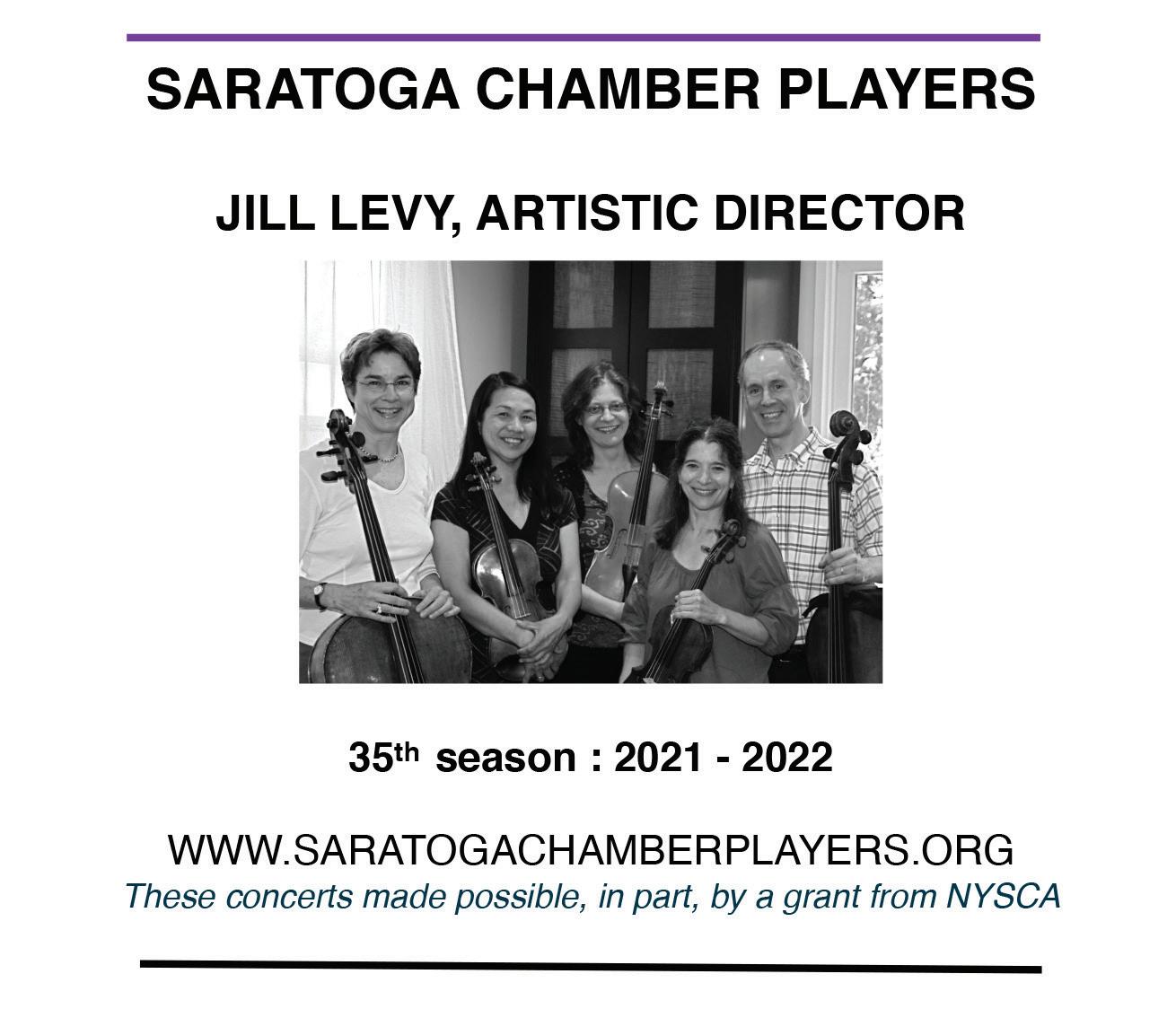
The Albany Symphony acknowledges the support of our corporate sponsors whose contributions recognize the importance of the Albany Symphony in building civic pride, educating our youth, and contributing to the cultural life of all people in the Capital Region. Updated September 1, 2021.














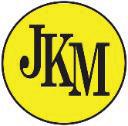







This concert season has also been made possible with public funds from the New York State Council on the Arts, a state agency, the City of Albany, grants from the National Endowment for the Arts, the Aaron Copland Fund for Music, the Capital District Economic Development Council, Vanguard-Albany Symphony, and the support of our donors, subscribers, and patrons.
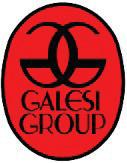










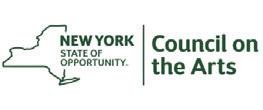

















Celine & Daniel Kredentser
John D. Picotte Family Foundation
Carl E. Touhey Foundation
Courtyard by Marriott Schenectady at Mohawk Harbor




The Albany Symphony is grateful to the following individuals for their vital ongoing support. Updated August 31, 2021.
($500-$999)
Dr. Kenneth S. & Ms. Elizabeth
D. Allen
Guthrie Birkhead
Mrs. Anne Brewster
Jim Caiello & Marcia Goldfeder
Dr. Paul J. & Dr. Faith B. Davis
Mary DeGroff & Robert Knizek
Ann & Don Eberle
Ben & Linda English
John Engster
Joseph and Linda Farrell
Marvin & Sharon Freedman
Janice & Robert Frost
David & Janice Golden
Susan M. Haswell Charitable Fund
Howard Jack
Mr. & Mrs. E. Stewart Jones Jr.
William Lawrence
Marylouise Ledduke
Mr. James Levine
Susan Limeri
C. Ursula W. MacAffer
Patrick McNamara
Karen Melcher
Lee & Heidi Newberg Fund
Deborah Onslow
Jim & Miriam Parmelee
Mrs. Tina W. Raggio
Dr. Joseph Peter Lalka & Teresa Ribadenerya
Alexandria Richart
Mr. & Mrs. Jay & Adrienne Rosenblum
Anne-Marie Serre
Kevin M. Shanley Ph.D
Marie & Harry Sturges
Avis & Joseph Toochin
Jeff & Barbara Walton
($250-$499)
Mr. David Scott Allen
Ms. Janet Angelis
Mr. Lawrence Snyder & Mrs. Lynn Ashley
Jeevarathnam Ayyamperumal
Richard & Susan Baker
Donald and Rhonda Ballou
Dr. & Mrs Beehner
Dawn Benson
Susan & Gus Birkhead
Dr. George Bizer & Dr. Ana Sobel
Peter Bogyo
Dorice Brickman
Robert G. Briggs
Diane & William Brina
Wesley Brown
Mr. Eric Chan
Sandy Clark
Mr. David Clark
Lynda & Robert G. Conway, Jr.
Jane & John Corrou
Mr. Wilson Crone
Carol Decker
Mr. Robert S. Drew
Kate & Jerry Dudding
Elena Duggan
Hope Engel Greenberg & Henry Greenberg
Sid Fleisher & Gayle Anderson
Kellie Fredericks
Mr. Gerald Miller &
Ms. Bonnie Friedman
Mr. Ronald C. Geuther
Barbara P. Gigliotti
Sandra & Stewart Gill
Gary Gold & Nancy Pierson
Mr. & Mrs. Allen S. Goodman
Shirley & Herbert Gordon
Robert & Mary Elizabeth Gosende
Michael Halloran
Robert R. Henion III
Martin Atwood Hotvet
Karen Hunter & Todd Scheuermann
John & Janet Hutchison
Ms. Amber Jones
Sally Lawrence
Keith Lee & James Gaughan
Ms. Deirdre Leland
Dr. Martha L. Lepow
Linda Leue
Elizabeth & David Liebschutz
Bob & Nancy Lynk
Elise Malecki
Frances T. McDonald
David & Barbara Metz
Stephen & Mary Muller
Alexis Musto
William & Elizabeth Nathan
Jonathan & Sigrin T. Newell
Carol and Ed Osterhout
Mr. Peter Pagerey
Linda Pelosi-Dunn
David & Deborah Phaff
Agatha Pike
Ms. Cynthia Platt
Paul & Margaret Randall
George & Ingrid Robinson
Marilyn & Roger Rooney
Deborah Roth
Stuart Rubinstein
John Ryan
Donna Sawyer
Joanne Scheibly
Kendra Schieber
Dr. John Schroeder
Ralph & Dorothy Schultz
Howard A Segal
Cynthia Serbent
Patricia Shapiro
Michael & Monica Short
John & Jacalyn Smith
Euan F.C. & Patricia Somerscales
Elizabeth A. Sonneborn
Mr. Olaf Stackelberg
Ms. Amy Jane Steiner
Sandra & Charles Stern
Ms. Katherine Storms
Dr. & Mrs. Frank Thiel
Patrick & Candice Van Roey
Jeff Vandeberg
John & Sarah Delaney Vero
Janet Vine
Marc Violette & Margaret Lanoue
Stephanie H. Wacholder & Ira Mendleson III
Drs. Susan Standfast & Theodore Wright
Barbara Youngberg
Dayle Zatlin & Joel Blumenthal
Wilfred Ackerly
Jack Alexander
Ms. Edith Allard
Dr. Edith Agnes Allen
Spencer Warnick &
Jennifer Amstutz
Thomas Amyot
Suzanne Anderson
Shirley R. Anderson & Robert Fisher
Linda Anderson
Susan Antos
Roger & Judith Armstrong
Katherine Armstrong
Anne A. Ashmead
Al & Georgina Aumick
Susan & Ronald Backer
Mr. & Mrs. Joseph Baggott
Dr. Ronald Bailey
The Bangert-Drowns Family
Anne & Hank Bankhead
Diane Bartholdi
Laurence & Sharon Beaudoin
Marius Beceanu
Sitso Bediako
Olga & Elmer Bertch
Susan & Gus Birkhead
Mrs. Christine Bishop
Valerie Bok & Joseph Lomonaco
Ruth Bonn
Joseph & Patricia Boudreau
E. Andrew Boyd
Mrs. Naomi Bradshaw
Mrs. Kathleen Bragle
Mary J. Brand
Ann & David Brandon
Charles Braverman & Ms. Julia Rosen
Mr. Karl O. Brosch
Marianne Bross
Melissa Brown
Crescentia & Bruce Brynolfson
Ms. Pat Buckley
Michael Buckman
Carol Butt
Stanley Michael Byer
Victor L. Cahn
Richard & Lorraine Carlson
Sarah & Patrick Carroll
Paul Castallani
Lois & Patrick Caulfield
Mrs. Jenny Charno
Mr Thomas Cheles
Judith Ciccio
Ms. Rae Clark
Mary Clyne
Ann & William Collins
David Connolly
Ruiko K. Connor
Maureen Conroy
Phyllis Cooney
Bonnie & Steven Cramer
Mr. Thomas Crowell
Ellen-Deane Cummins
Barb & Gary Cunningham
David A. Danner
Carol Davis
Mr. Dominick DeCecco
Cathleen DeCrescente
Roberta Deering &
Gregory I. Ptucha
Philip Degaetano
Garrett & Michele Degraff
Mr. James Dennehey
Dr. & Mrs. Anthony J. DeTommasi
Michael Devall
Mrs. Mary A. Devane
Deborah Dewey
Mr. Larry Deyss
Mr. & Mrs. Paul Dichian
David DiVergilio
Gregory & Gail Dobkins
Helen Dolan
Mary Beth Donnelly
Robert & Marjorie Dorkin
Jan & Lois Dorman
Hollis Dorman
Marilyn & Peter Douglas
Raymond Dowling
Caitlin A. Drellos
Kevin Dubner
Susan Dubois
Marcia Dunn
Ms. Priscilla Duskin
Frederick & Barbara Eames
John & Pamela Eberle
Mr. Chris Edwards
Carl & Joan Ekengren
Mr. Bryan Ekstrom
Dorothy Ellinwood
David Emanatian
Anne Eppelmann
Ari Epstein & Rima Shamieh
Mary Alyce Evans
Donna Faddegon
Palmer Fargnoli
Mr. & Mrs. John J. Ferguson
Pam Fernandez
E. Stephen Finkle
Hugh & Susan Fisher
Paul & Noreen Fisk
Lawrence & Susan Flesh
Ms. Susan Forster
Reg Foster & Maryann Jablonowski
Joel & Nancy Fox
Nancy T. Frank
Kellie Fredericks
Elaine C. Freedman
Connie H. Frisbee Houde
Roy & Judith Fruiterman
Fruscione Family
Robert J Gallati
Lawerence Gambino
Barbara P. Gigliotti
Chandlee Gill
Carol Gillespie & Marion E. Huxley
Dr. Reid T. Muller & Dr. Shelley
A. Gilroy
Mr. David Gittelman
Dr. G. Jeffrey Glikes, D.D.S.
Charles & Karen Goddard
Deborah & Gary Goldstein
Sonja Goodwin
Emilie Gould
Lynne Graburn
Victoria Graffeo
B. H. Green
Diane & John Grego
Robert & Pauline Grose
Frances Gross
Robert F. Guerrin
David E. Guinn
Mr. & Mrs. Carlton & Susan Gutman
Mr. Winston J Hagborg
Scott Halle
Ms. Joan Ham
Henry & Pauline Hamelin
Dorothy & Victor Han
Dianne & Philip Hansen
Mr. David Harris
Helen Harris
Mark Harris
Dr. & Mrs. Joseph J. Hart
Kathleen R. Hartley
Leif & Claudia Hartmark
Mr. and Mrs. Richard S. Hartunian
Mr. Drew Hartzell
John Hawn
Megumi K. & Dietrich P. Hemann
Robert R. Henion III
Nancy Hershey
Mr. William J. Hetzer
James C. Hicks
Phyllis & Stephen Hillinger
Joel & Elizabeth Hodes
Debra & Paul Hoffmann
Edward Joseph Holcomb
Susan Hollander
Mr. Richard Allan Horan
Robert & Ellen Hotz
Sam House
Chuong Huang
Marilyn Hunter
Paul Hyams & Lisa Kwong
Hon. Irad & Jan Ingraham
Paul Jamison
Eric & Priscilla Johnson
Annette Johnson
Mr. Gary Jones
Heather Joralemon
Victor Juhasz
Shelley Justa
Mr. Steven Kamenir
Mrs. Diane M Karol
John & Marcia Rapp Keefe
Mr. & Mrs. William Kennedy
Donald Kennelly
Frederick & Doris Kirk
Edward J. & Andrea E. Kish
Lisa Kissinger
Edith Kliman
Mr. Adam C. Knaust
Dr. Beatrice Kovasznay
Mrs. Margaret Kowalski
Michael Krempa
Mr. Charles Anthony Kristel
David & Diane Kvam
Paul Lamar & Mark Eamer
Mary Lampi & Bernard Melewski
Mrs. Barbara Lapidus &
Mr. Carl Snyder
Ann Lapinski & Fred Barker
Roy & Elizabeth Lasky
Angela Sheehan & Franklin Laufer
Jennifer & Tod Laursen
Mr. Bryan F. Lavigne
Martha Lazarus
Ms. Laura Leeds
Patricia J. Liddle
Mr. Thomas Locke
Jill Loew
Mr. Rudy Stegemoeller
Ms. Susan Moyle Lynch
Bob & Nancy Lynk
Marguerite MacDonald
William & Gail Madigan
Beverly & Richard Magidson
Marybeth Maikels
Elise Malecki
Mr. Hani Marar
Louise and Larry Marwill
Mr. Arthur Mattiske
Mr. James McClymonds
Elena McCormick
Thomas McGuire
Robert McKeever
Thomas McNutt
Benjamin & Ruth Facher Mendel
Patricia Meredith
John Mesch
Mr. Raymond W. Michaels
Mr. Vernon H. Mihill
Michelle Miller-Adams
Ms. Ruth Anne Moore
Alice & Richard Morse
Helen Murphy
Judith Mysliborski
Nancy Newkirk
Ken Jacobs & Lisa Nissenbaum
Dr. Arlene E. Nock
Christopher Nolin
Mr. Andrew Obernesser
Timothy Obrien
Connie & Ned O’Brien
Jeremy Olson
Darren Oneill-Knasick
David M. Orsino
Janice Oser
Mr. Stephen Pagano
William Panitch
Mr. E. Parran
Ms. Kathleen Patentreger
Mr. & Mrs. Robert Edward Pett
Bob & Lee Pettie
Christian & Carol Pfister
Roberta Place
Julia Popova
Maryann Postava-Davignon
Joseph Potvin & Patricia Potvin
John Smolinsky & Ellen Prakken
Diana Praus
Donald Preuninger
Rosemary Pyle
Ms. Brin Quell
Mr & Mrs Craig & Dale Raisig
Paul and Margaret Randall
Laura Rappaport
Barbara Raskin
Lenore & Jack Reber
Mark & Cheryl Reeder
Cheryl V. Reeves
Dr. Christopher & Kendall Reilly
Ms. Lynn Rhodes
Susan Riback
Mr. Steven Rich
Mr. & Mrs. George P. Richardson
Jill & Richard Rifkin
John Roberts
Eric S. Roccario MD
Steven and Janice Rocklin
Nancy & John Rodgers
H. Daniel Rogers
Caleb Rogers
Marilyn & Roger Rooney
Harlan & Catherine B. Root
Rosemarie V. Rosen
Mr. & Mrs. Harry Rosenfeld
Marin Wyatt Ridgeway & Don Ruberg
Ms. Margaret M. Ryan
Mr. William D. Salluzzo
Paul & Kristine Santilli
Mary Kay Sawyer
Peg & Bob Schalit
William & Gail Haulenbeek Schanck
Joanne Scheibly
Mr. Robert Scher &
Ms. Emilie Gould
Dr. Harvey & Happy Scherer
Lois & Barry Scherer
Jackie Scholten
Dominic Scialdone
Jason Scruton
George Jolly & Caroline Seligman
Taimi Shanley
Mr. & Mrs. William A. Shapiro
Julie & William Shapiro
Ms. Ann Shapiro
Mrs. Dolores A. Shaw
Mrs. Joanne Shay
Mr. Yung Shen
Jacob Shen
Dr. & Mrs. Aaron E & Nina K Sher
Susan V. Shipherd
Kathryn Sikkink
Stephen J. Sills MD
Brad Silver
Jiyoon Simcoe
Stephen C. Simmons Family
Mr. & Mrs. Manfred &
Marianne Simon
Gloria & David Sleeter
Dr. & Mrs. Arnold Slowe
John & Jacalyn Smith
Rosalie & Roger Sokol
Mr. Norman Solomon
Joyce A. Soltis
Dr. Clara E. Somoza
Ms. Elizabeth Sonneborn
Donald & Morag Stauffer
John Matthew Staugaitis
Deborah Stayman & Jonathan Carp
Dr. & Mrs. Yaron & Katie Sternbach
Joann Sternheimer
Margaret Stevens
David H. Steward
Dr. Doris A. Stoll
Ms. Katherine Storms
Mr. & Mrs. Martin Strnad
Norman & Adele Strominger
Dr. Erica M. Sufrin
Kathy Sullivan
Amy & Robert Sweet
Ben Szaro
Thomas Taber
John & Sally Ten Eyck
Glen Tesch, CPA
Mr. Michael Tobin
Lisa Trubitt & Spiro Socaris
Alta Turner
Ms. Josey Twombly & Dr. Ian Porter
Terry & Daniel Tyson
Linda Demattia Underwood
Jody & John Van Voris
Mr. James Vielkind-Neun
Dr. Elisabeth Vines
Linda M. Wagner
William A. Wallace & Patricia
K. Herman
Wendy Wanninger
Larry Waterman
Lois D. Webb
Gerhard Weber
Mr. Wolfgang Wehmann
Dawn Stuart Weinraub
Jerry & Betsy Weiss
Ms. Sharon A Wesley
Wheelock Whitney III
Dan Wilcox
Frederick & Winnie Wilhelm
Ms. Elizabeth F. Williams
Paul Wing
Russell Wise & Ann Alles
Mr. Meyer J. Wolin
Ms. Susan Wood
Irene Wynnyczuk
Mr. & Mrs. G. William Zautner
Michael Zavisky
Michael & Katherine Zdeb
Julia Zhu
Mark Zielinski & Lynn Momrow
As of August 31, 2021. *In Memoriam
In Memory of Sharon Bamberger
Joe Bamberger
In Memory of Jeanne Bourque
Chris Edwards
In Memory of Neil C. Brown, Jr.
Thomas Cheles
John Davis
Dominick DeCecco
Robert & Pauline Grose
Gary Jones
Elinor & Michael Kelliher
Kersten Lorcher & Sylvia Brown
Deborah Mazzone
Dr. & Mrs. Thomas Older
Joseph & Patricia Potvin
Robert Joseph & Rosemarie Rizzo
Stuart Rubinstein
Mary Kay Sawyer
Patricia & Roger Swanson
Lisa Trubitt & Spiro Socaris
Maryalice & Bruce Svare
Jody & John Van Voris
Sharon A. Wesley
Mr. Meyer J. Wolin
Anne & Art Young
In Honor of Elaine Conway
Elaine Verstandig
In Loving Memory of Adella
Cooper
Miss Eileen C. Jones
In Memory of Elsa deBeer
Jenny deBeer Charno
Jo Ann & Buzzy Hofheimer
Susan Thompson*
Peter & Rose-Marie Ten Eyck
Sarah & Patrick Carroll
Charlotte & Charles Buchanan
John J. Nigro
New York Council of Nonprofits
David Scott Allen
Greta Berkson
Mary & Tom Harowski
Mary James
Sally & Edward Jennings
Leigh & Louis Lazaron
Susan Limeri
Ann Silverstein
Anna Taglieri
Enid Watsky
In Loving Memory of Frederick S. deBeer, Jr.
David Scott Allen
Elsa G. deBeer
Adelaide Muhlfelder
In Honor of Dr. Gustave Eisemann
Alan Goldberg
In Honor of Marisa Eisemann
Dr. Heinrich Medicus
In Memory of Dr. Alvin K. Fossner
Carl & Cathy Hackert
In Memory of Allan D. Foster
Mrs. Lois V. Foster
In Memory of Rachel Galperin
Margaret & Robert Schalit
In Memory of Shirley Gardam
Maryann Jablonowski
Reg Foster
Mary McCarthy
David Gardam
Stephanie Wacholder
In Memory of Jane Golub
Albany Symphony Orchestra Committee
In Honor of Jerry Golub
Sara & Barry Lee Larner
In Loving Memory of Roger Hannay
Alan Goldberg
In Memory of Jeffrey Herchenroder
Linda Anderson
Robert Akland
Ann-Marie Barker-Schwartz
Paula Brinkman
Elizabeth Bunday
Joseph Demko
Gary & Sandy Gnirrep
Guilderland Central Teachers Assoc.
Guilderland Music Parents and Friends Assoc.
Leif & Claudia Hartmark
Kelly Hill
Geneva Kraus
Lynwood Elementary
Marybeth Maikels
Sharen M. Michalec
Timothy & Kathleen M. Owens
Jocelyn Salada
Jacqueline West Farbman
In Loving Memory of Beatrice & Robert Herman
Dr. & Mrs. Neil Lempert
Louise & Larry Marwill
In Memory of Petia Kassarova
Julie & William Shapiro
Larry Waterman
In Memory of Audrey Kaufmann
Judith & Herbert Katz
In Memory of Louise Marshall
Kimberly Arnold
Gloria MacNeil
Jennifer Marshall
Susan Marshall
Ricki Pappo & Caleb Rogers
Ann & Mark Rogan
Beth Rosenzweig
In Memory of Susan Martula
David & Tanyss Martula
Elena Duggan
Megumi Hemann
Edward Kish
Paul Lamar & Mark Eamer
Marsha Lawson
Anne & Thomas Older
Rider, Weiner & Frankel, P.C.
Margaret Schalit
William & Julie Shapiro
Robert Sweet
Dawn Weinraub
In Loving Memory of Dr. Heinrich Medicus
Carol & Ronald Bailey
Paul & Bonnie Bruno
Elsa deBeer
Alan Goldberg
Harry G. Taylor
In Honor of David Alan Miller
Lois & Barry Scherer
Susan St. Amour
In Honor of Miranda, Elias, and Ari Miller
Bonnie Friedman & Gerald Miller
In Honor of Candida R. Moss
Marcia & Robert Moss
In Memory of Marcia Nickerson
Philip & Penny Bradshaw
Irene Wynnyczuk
In Loving Memory of Don B. O’Connor
Helen J. O’Connor
In Honor of Anne Older
Shannon Older-Amodeo & Matthew Amodeo
In Memory of Clyde Oser
Janice Oser
In Memory of Paul Pagerey
Peter & Ruth Pagerey
In Loving Memory of Jim Panton
Bonnie & Paul Bruno
Marcia & Findlay Cockrell
Nancy Goody
Mary Anne & Robert Lanni
Drs. Marisa & Allan Eisemann
David Alan Miller
In Memory of David Perry
Steven Fischer
William Hughes
Frederick Luddy
Richard & Anne Martula
James McGroarty & The NYCPGA
Robin Seletsky
Amy & Robert Sweet
Dawn Weinraub
In Memory of Justine R. B. Perry
Dr. David A. Perry


In Loving Memory of Vera Propp
Dr. Richard Propp
In Honor of Carole Rasmussen
Elizabeth Williams
In Honor of Nancy & Barry Richman
Jan & Lois Dorman
In Honor of Jill Rifkin
Matthew Collins
In Memory of John Leon Riley
Anne & Thomas Older
Chet & Karen Opalka
Jane Wait
In Memory of Lewis Rubenstein
Mark Aronowitz
August Costanza
Gina Costanza
Marcia Dunn
Susan & Stewart Frank
Arthur & Maxine Mattiske
Barbara Poole
Kathleen Pritty

To keep orchestral music alive in our community, and to ensure that future generations experience its joy, please consider joining the Albany Symphony Encore Society.
Gifts of all sizes make it possible for the Albany Symphony to maintain our tradition of artistic excellence and innovation and community engagement for generations to come.
There are many options to make a planned gift to the Albany Symphony that enable anyone to leave a legacy of music:
• Charitable bequests
• IRA or 401(k) beneficiary designation
• Gifts of life insurance or appreciated stocks
• A bequest in a will or living trust
TO LEARN MORE ABOUT THE ENCORE SOCIETY, PLEASE CONTACT:
Robert Pape | Director of Development & Marketing (518) 465-4755 x144 | Robertp@albanysymphony.com

WE INVITE YOU TO CREATE YOUR OWN LEGACY AND JOIN THE FOLLOWING MEMBERS OF ENCORE SOCIETY
Anonymous
Matthew Bender IV
Melody Bruce, MD
Charlotte & Charles Buchanan
Adella S. Cooper
Susan Thompson & Al De Salvo
Marisa Eisemann, MD
David Emanatian
Alan P. Goldberg
Edward M. Jennings
William Harris & Holly Katz
Charles Liddle III
Steve Lobel
Dr. Heinrich Medicus
Marcia Nickerson
John L. Riley
Harry Rutledge
Gretchen A. & Lewis C. Rubenstein
Ruth Ann Sandstedt
Rachel & Dwight Smith
Harriet & Edward Thomas
Micheileen J. Treadwell
Paul Wing



Did you know that many of the musicians of the Albany Symphony do not live in the Capital Region? Musicians travel from New York, Boston, Montreal, Nashville, Ft. Lauderdale, and even as far as Texas, to perform with the Albany Symphony. Typically, our musicians are here from Thursday through Sunday of a concert week. Through the generosity of local host families, the Albany Symphony Musician Housing Program was created. Without the support of our host families, we would not be able to maintain the high caliber of musicians who perform with our orchestra. Many of our hosts have created strong bonds with the musicians that stay with them, creating friendships that last a lifetime.
Right now, due to the pandemic, musicians are not staying with our generous host families. Instead, the Albany Symphony is providing hotel rooms for our musicians.
The Albany Symphony Orchestra extends a very special thank you to patrons who generously provided housing for musicians during the 2019–20 season, and we look forward to reuniting our musicians with our hosts when it is once again safe to do so.
Camille & Andrew Allen
Jenny Amstutz
Dan Bernstein & Efrat Levy
Concetta Bosco
Mimi Bruce & David Ray
Charles Buchanan
Barbara Cavallo
Ben Chi
Diane Davison
Susan & Brian Debronsky
Michelle DePace & Steven Hancox
Nancy & John DiIanni
Star Donovan
Bonnie Edelstein
Lynn Gelzheizer
David Gittelman & Tom Murphy
Catherine & Carl Hackert
Debra & Paul Hoffmann
Susan Jacobsen
Marilyn & Stan Kaltenborn
Nettye Lamkay & Robert Pastel
Barb Lapidus
Eric Latini
Bill Lawrence & Alan Ray
Eunju Lee & Brian Fisher
Susan Martula & David Perry
Anne Messer & Dan Gordon
Jon & Sigrin Newell
Helen J. O’Connor
Marlene & Howard Pressman
Reese Satin
Joan Savage
Dodie & Pete Seagle
Julie & Bill Shapiro
Elizabeth & Aaron Silver
Lorraine Smith
Onnolee & Larry Smith
Lois & John Staugaitis
Harriet Thomas
Andrea & Michael Vallance
Marjorie & Russ Ward
Margery & Michael Whiteman
Carol Whittaker
Dan Wilcox
Barbara Wiley
Merle Winn*


PatrickL.Seely,Jr.




